What are the best Bluetooth speakers money can buy? I’ve tested more than 30 models, and these are my top picks for every budget
Simply the best Bluetooth speakers you can buy right now
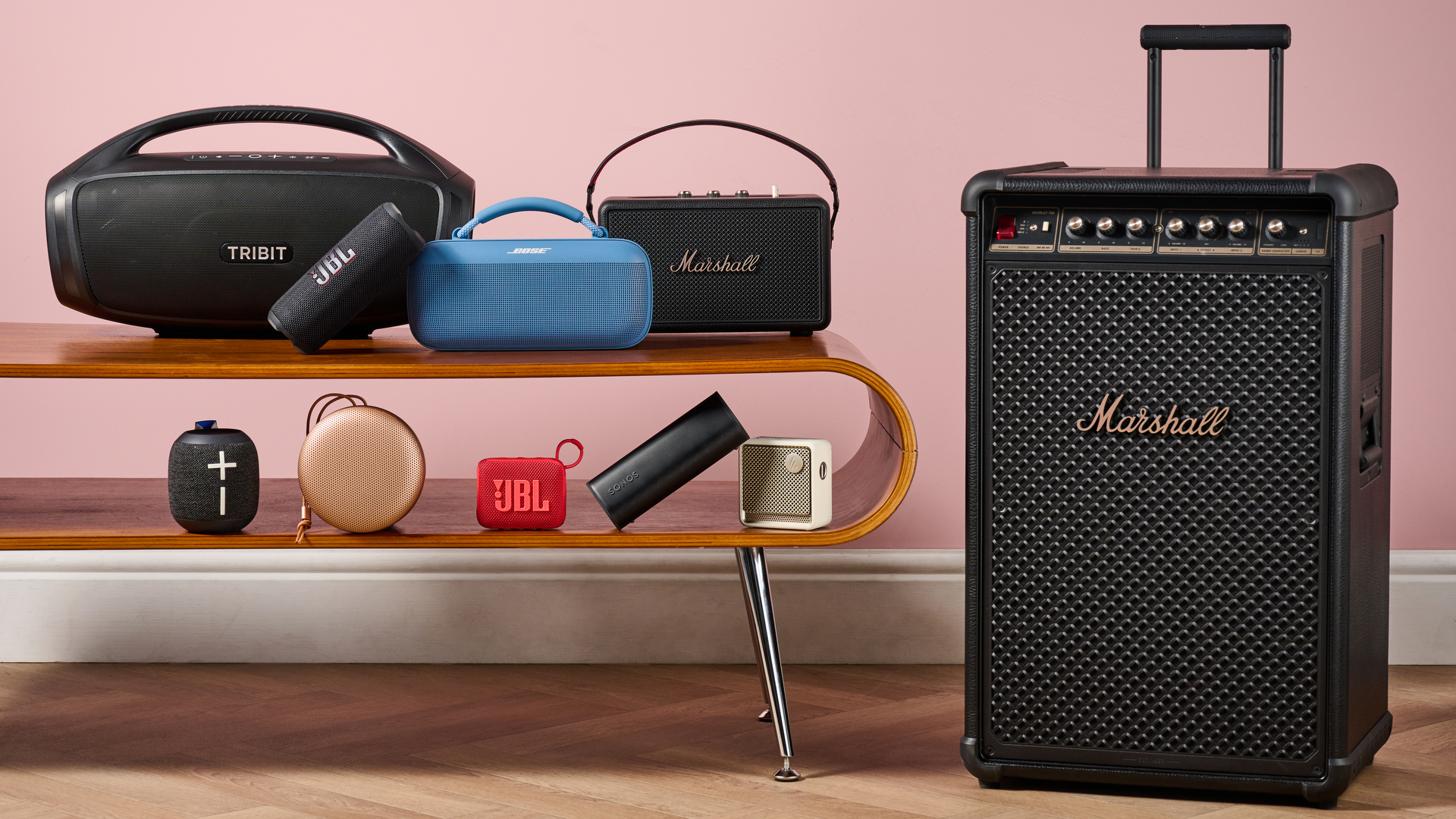
- My #1 overall pick
- Best for less than $50 / £50
- Best $50-$100 / £50-£100
- Best $100-$200 / £100-£200
- Best over $200 / £200
- Best small speaker for audiophiles
- Best party speaker
- Best for battery life
- Best with Wi-Fi too
- Best giant party speaker
- Comparison chart
- More speakers I tested
- How I tested
- Q&A
- Latest updates
If you’re shopping for a new Bluetooth speaker, the choice can be overwhelming, but I’m here to help. Whether you want a small, compact option or a big, booming party speaker, I’ve created this definitive list of the best Bluetooth speakers your money can buy.
I’ve personally tested every single Bluetooth speaker here, as well as most of their competitors. At the time of writing, more than 30 devices have gone through my rigorous testing process. It doesn’t matter what our budget is, there's something here for everyone. I've got everything from impulse budget buys through to a speaker that can power an actual concert.
Trust me when I say the testing process has been rigorous. I've analytically listened to hours of music, tried their features, assessed their design, and directly compared everything against rivals. All of this took place at the music testing space at TechRadar's reviewing lab. It’s a controlled environment for assessing audio quality, and the perfect place to create this guide to the best Bluetooth speakers around today.
You’ll find my number one pick for most people below, as well as other recommendations based on different budgets and uses. I've included the official prices of the speakers in each entry, but also a target price, which is how much I think you should aim to pay for these speakers in the real world, where prices are regularly lower.
My #1 overall pick

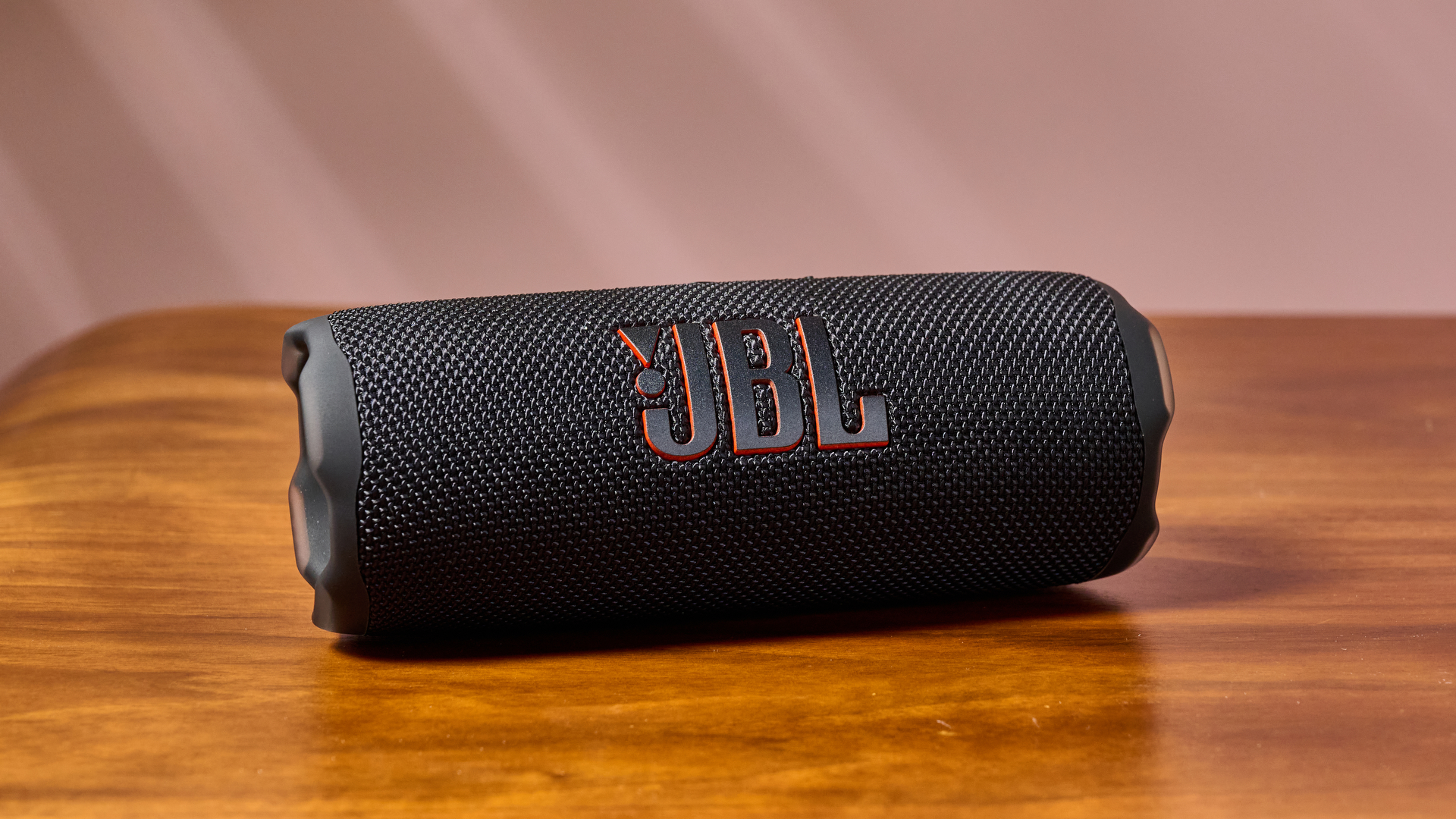
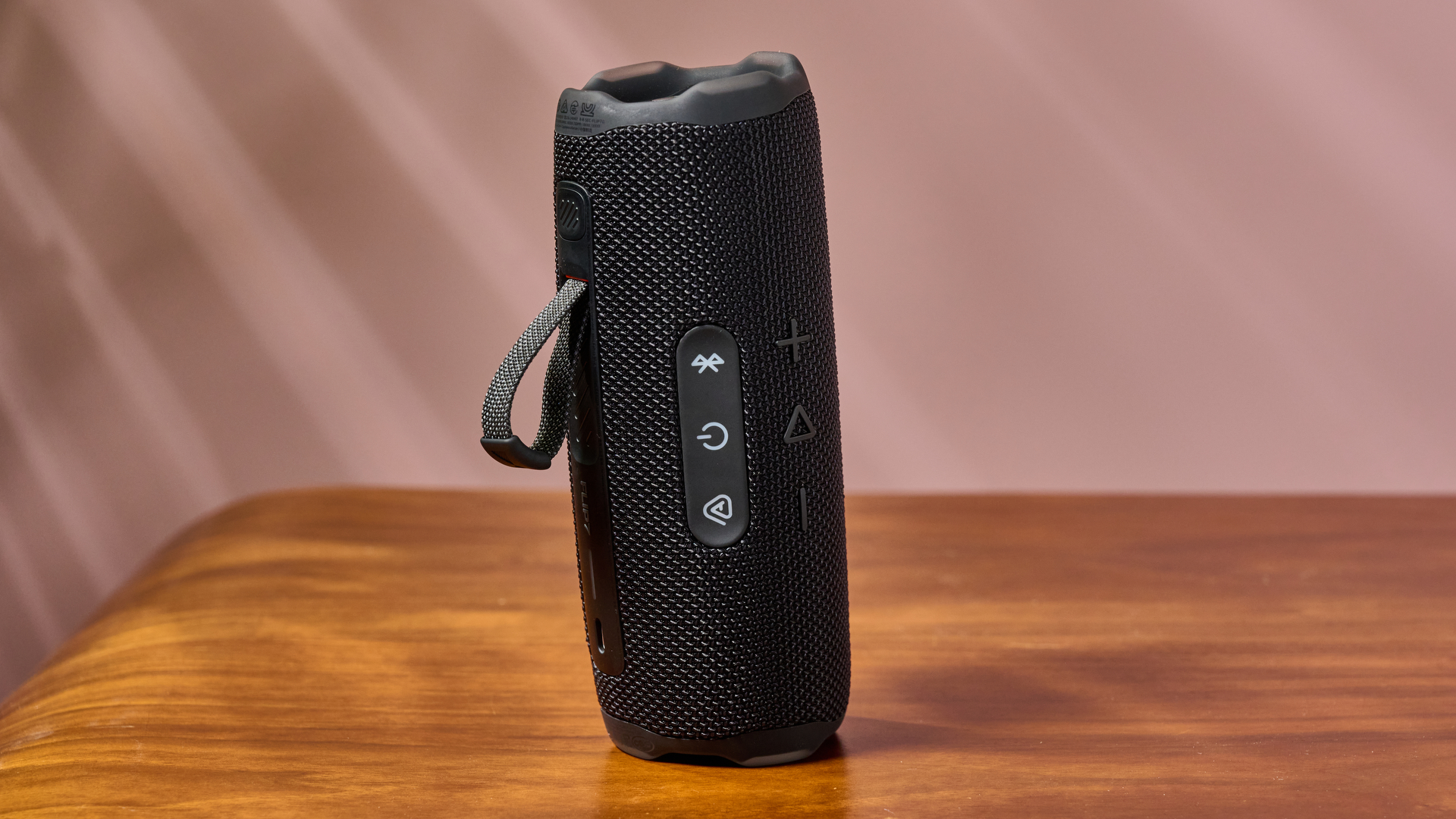
Reasons to buy
Reasons to avoid
3 reasons why this Bluetooth speaker beats the rest
Why you can trust TechRadar
✅ Unbelievable sound quality in a highly compact model: I was blown away by the Clip 7’s impactful yet regimented bass response, but also its clear midrange performance and expressive treble. For its size, the Flip 7 offers a beautifully balanced, cohesive, and dynamic listen that made me want to bump my tunes for hours on end.
✅ Top-tier durability and waterproofing: With an IP68 rating, the JBL Flip 7 isn’t just fully dustproof, but it’s also able to survive being dunked in 1.5 meters of freshwater for up to 30 minutes. It has a drop-proof design and is scratch-resistant, making it an extremely hardy speaker indeed.
✅ Unbeatable value for money: For its mid-range price, the JBL Flip 7 is incredibly talented. I was wowed by its sonic capabilities, especially in the bass department, but it also has a great set of features, admirable battery life, and a rugged design. I also love the JBL Charge 6 for similar reasons, but the Flip 7’s unbeatable value for money helps it take top spot.
Why you can trust my picks

☑️ More than 1,300 reviews per year
☑️ 17 years of product testing
☑️ Over 16,000 products reviewed in total
☑️ Nearly 200,000 hours of testing tech
☑️ Read TechRadar's review guarantee
For more than a year and a half, I've served as a resident Reviews Writer here at TechRadar, where I have a particular focus on audio tech. I’ve tested some of the best noise-cancelling headphones, best soundbars, and, of course, the best Bluetooth speakers on the market right now.
I built this guide from the ground up after testing a range of speakers against one another. I’m talking everything from small budget options up to premium, towering party speakers. The vast majority of the models that I’ve tested haven’t made the cut here – after all, I re-tested more than 30 in my quest to provide you with the definitive Bluetooth speaker guide!
Best Bluetooth speakers – my picks in-depth
Best for less than $50 / £50
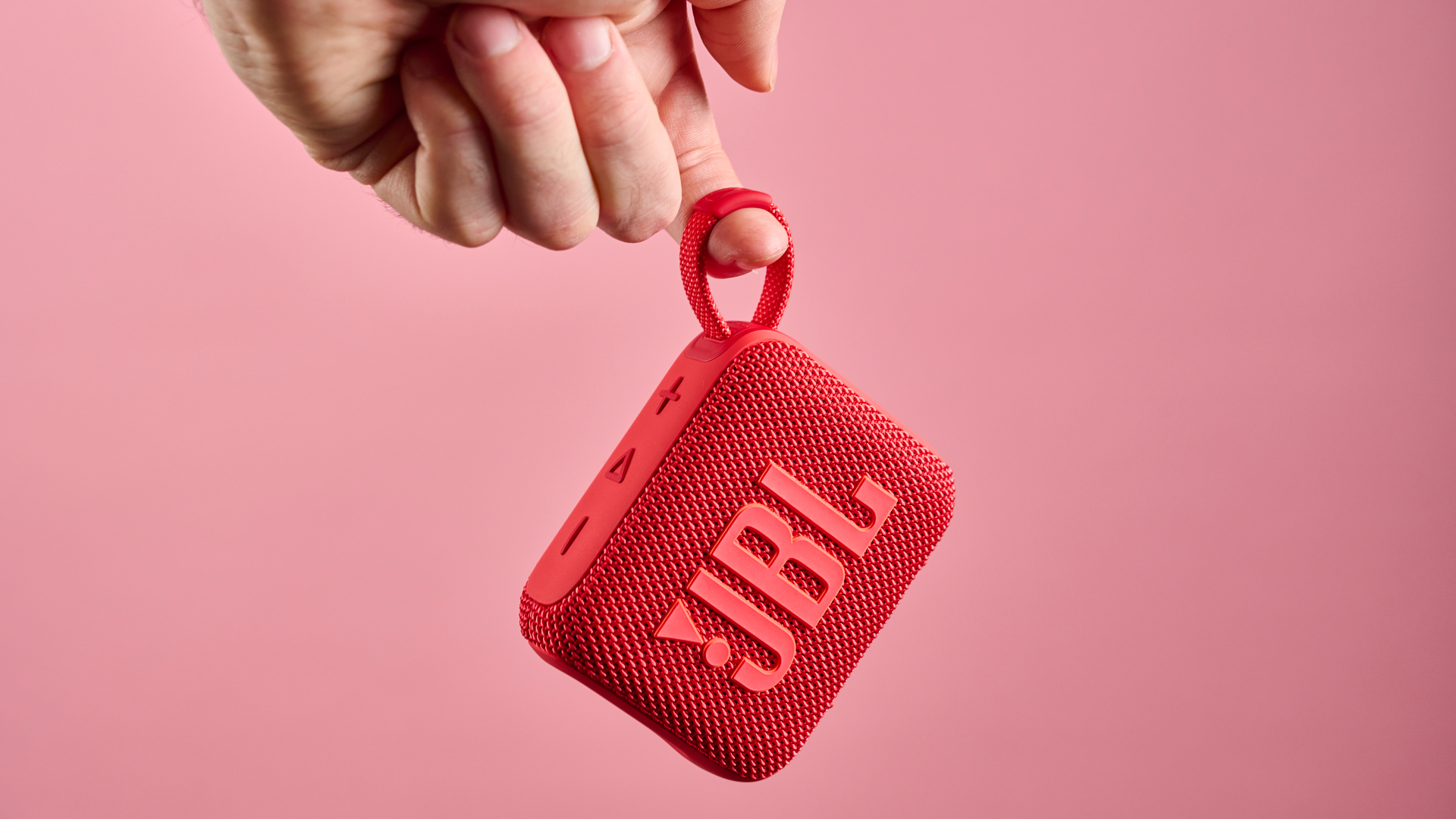
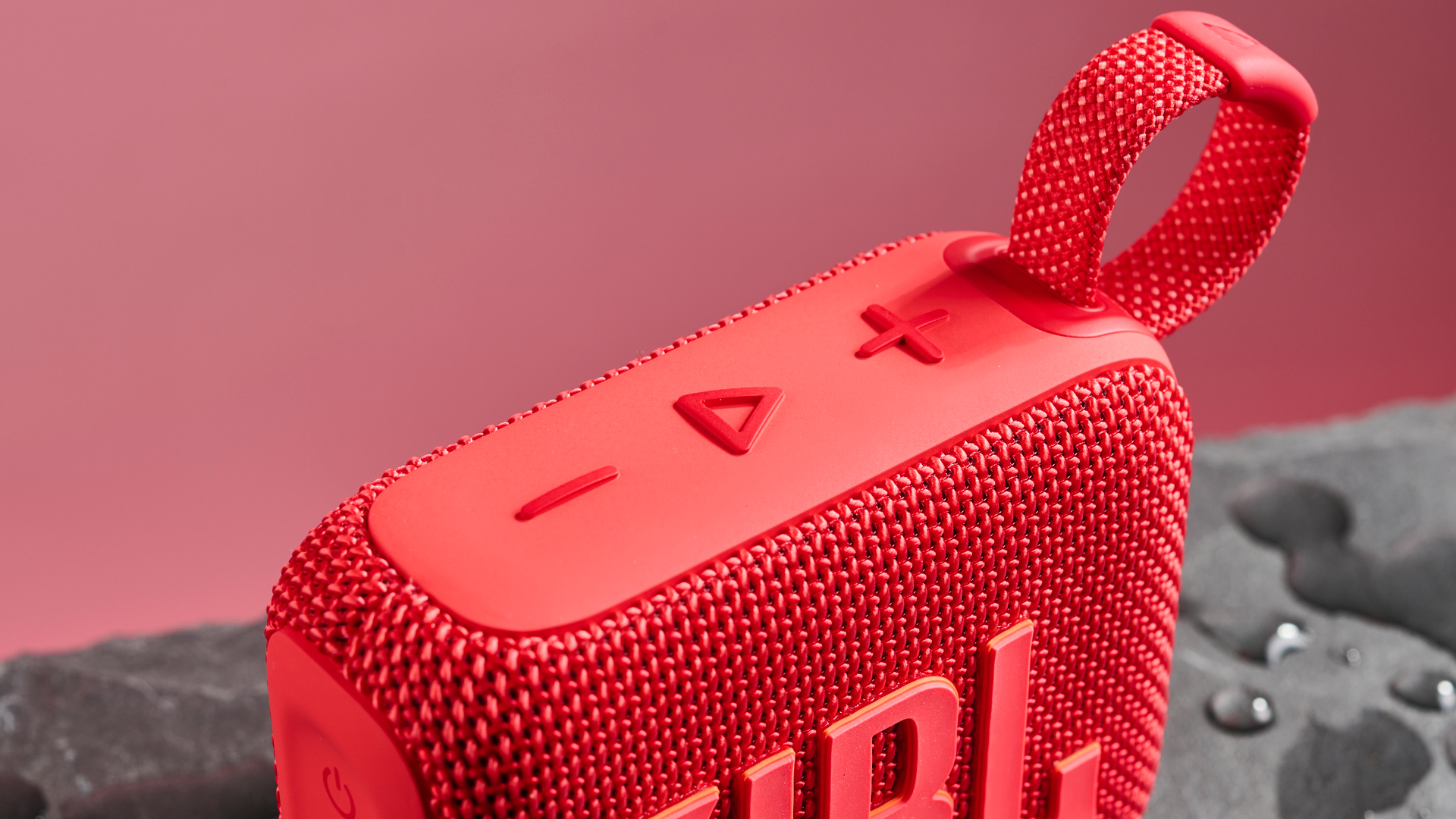
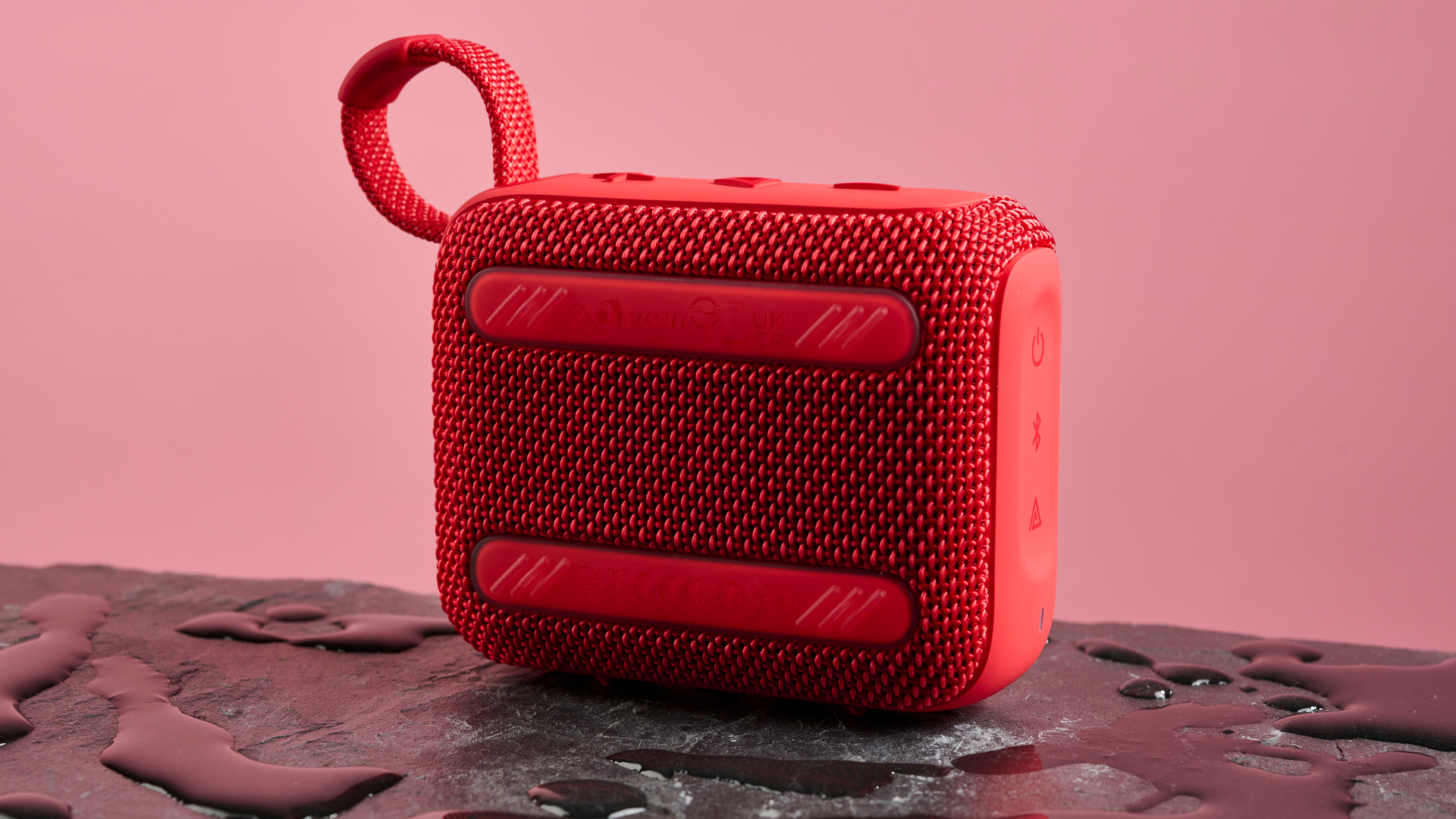
Specifications
Reasons to buy
Reasons to avoid
The low-down
I’m going to kick off the full-list with my choice for the best ultra-cheap Bluetooth speaker. Yes, the JBL Go 4 is the ideal pick for anyone looking to spend less than $50 / £50. I love the fact that it can supply punchy, clear audio, even through such a tiny form.
Even when I played a few of my favorite house tracks, I was surprised with the bass weight the Go 4 could muster up. And when you combine that with a waterproof, durable build and feature-rich companion app, you’re getting a ton of bang for your buck.
Scorecard

I was pleased to see that the Go 4 provided all the necessities. Its nifty companion app opens up EQ adjustment and stereo pairing (if you’ve got another Go 4), and I was even able to pair it to other JBL speakers using Auracast. PlaytimeBoost can also provide a few more hours of listening, which you may need, given the speaker’s fairly limited battery life.
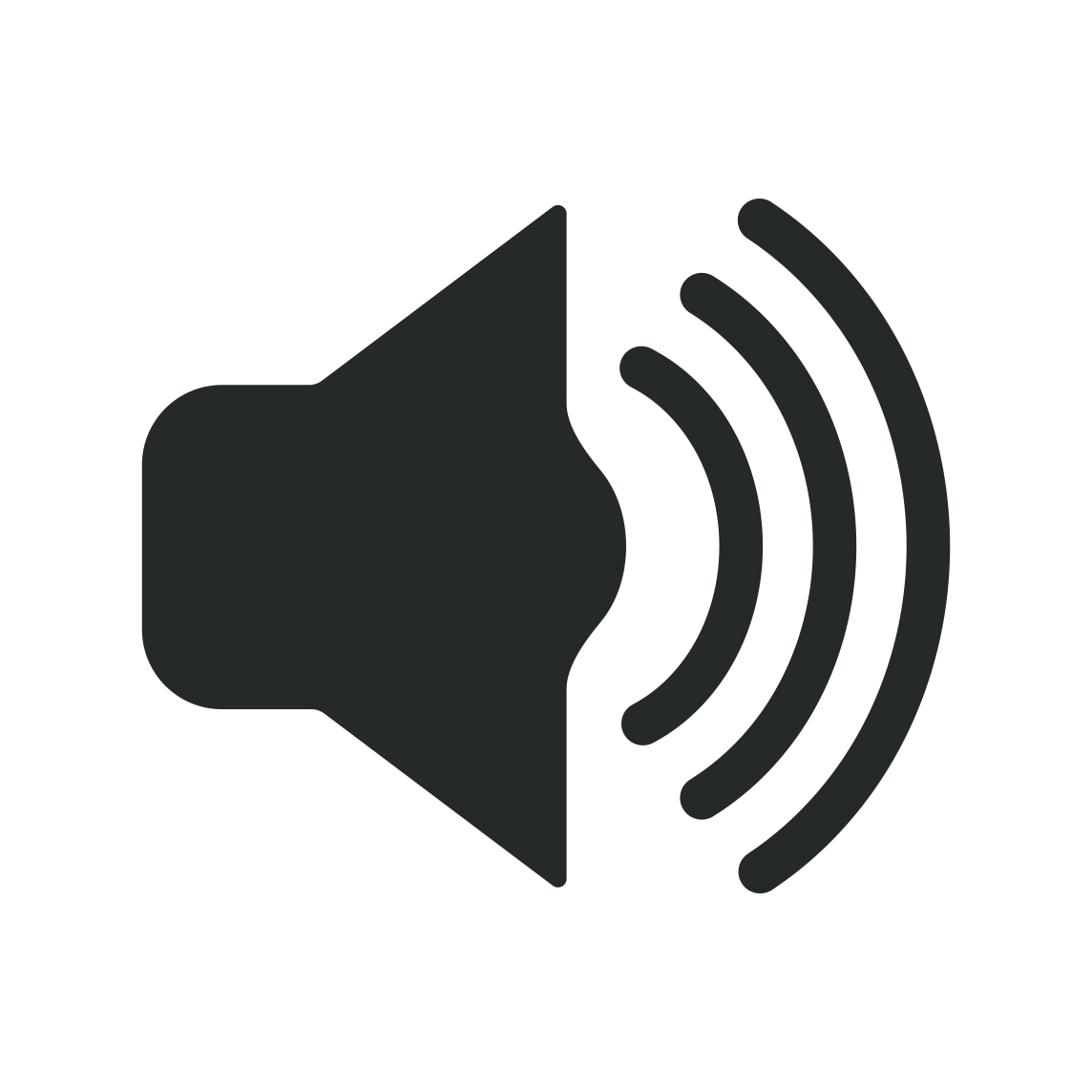
Of course, when a speaker is this small, it isn’t going to blow you away in the audio department, but I was pleasantly surprised by the Go 4. I tried listening to a range of tracks, including bass-heavy bangers, and this mini model performed well across the board. I experienced decently punchy low-end replication and clear vocals, though there is some noticeable compression at higher volumes.
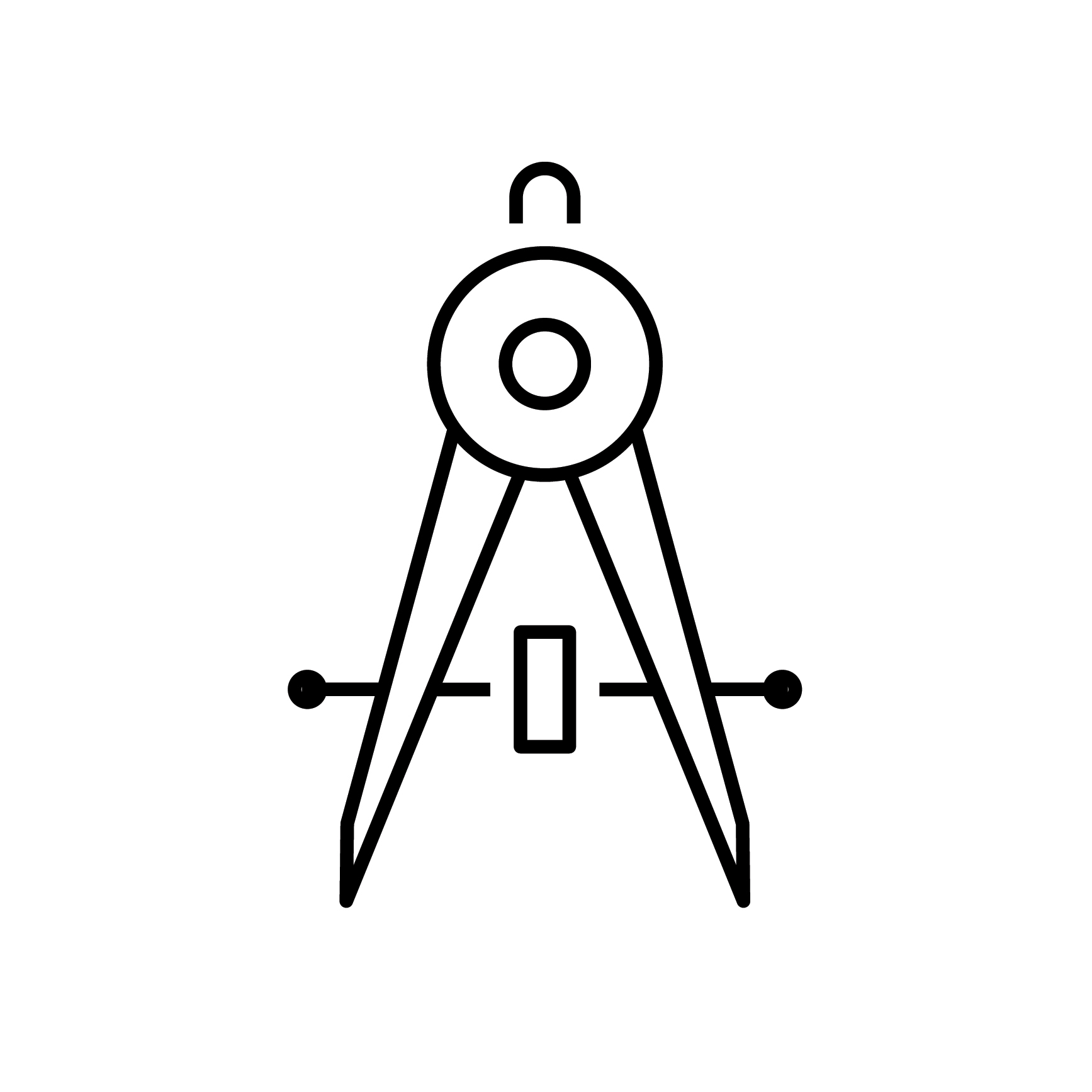
Something I always appreciate from JBL is its effort to create speakers in fun colorways, which makes a model like the Go 4 stand out from the crowd. It also has IP67 dust and waterproofing, making it both an eye-catching and durable pick. The small loop can fit on a hook or similar too, which is pretty convenient.

Sure, if you spend a little more, you could grab the better-sounding JBL Clip 5 – and non-US readers could even grab the Edifier ES20 for a similar cost. But if I had a strict sub-$50 budget, I’d buy the Go 4. It’s ultra-compact, but still sounds pretty strong. It’s got plenty of features to play around with, and it's well-protected against the elements. All in all, that’s very tempting.
Best between $50-$100 / £50-£100
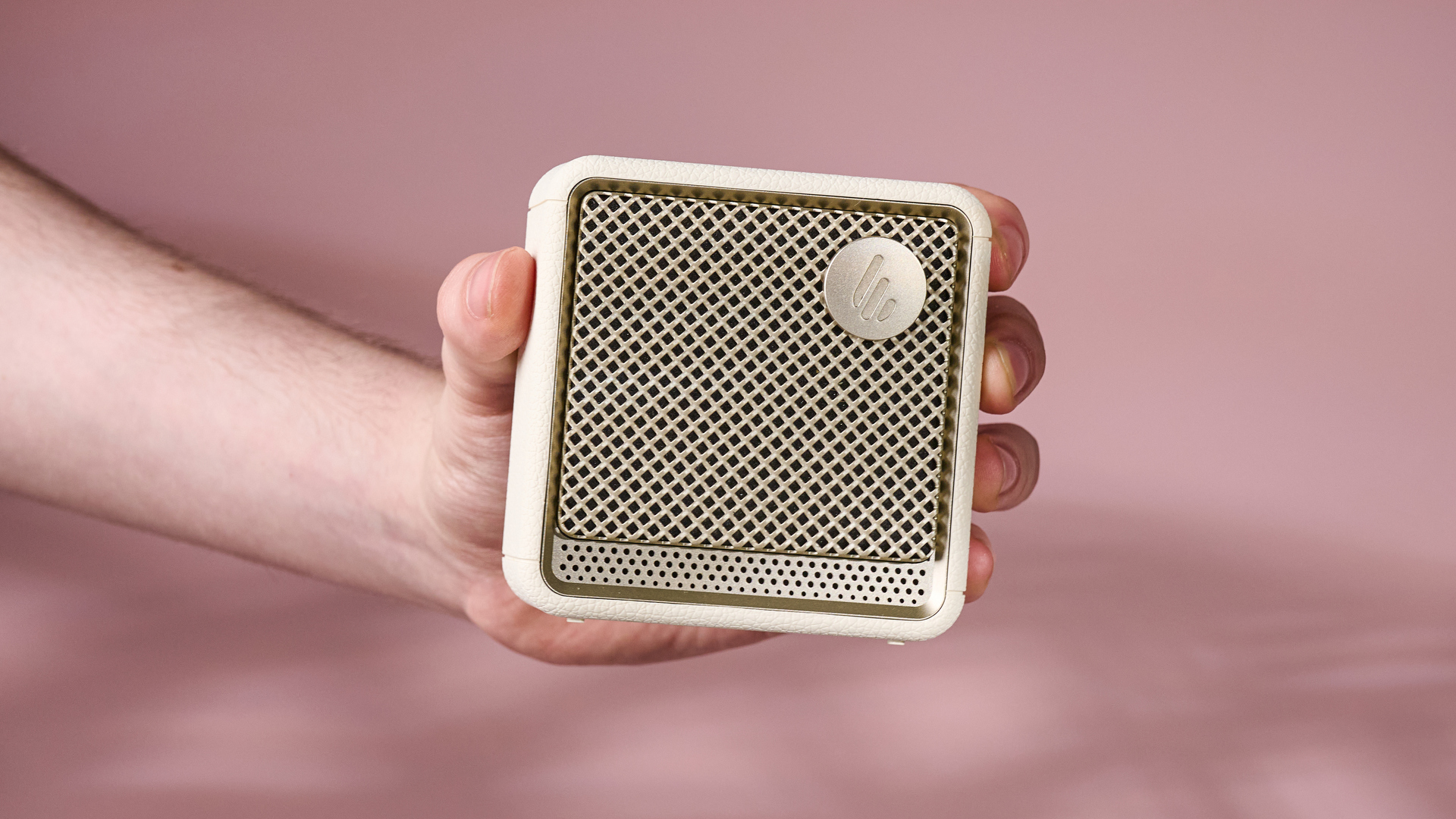

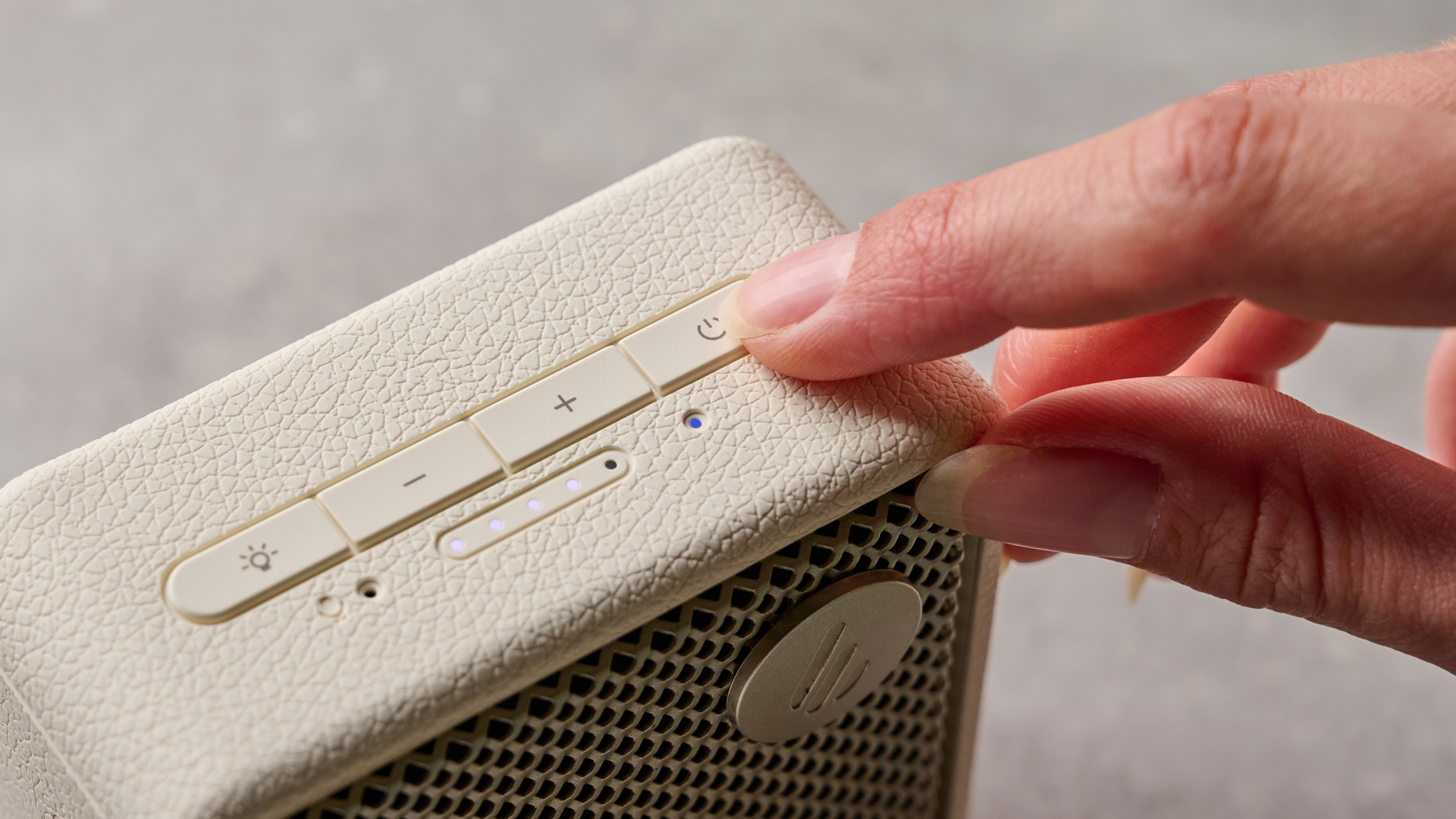
Specifications
Reasons to buy
Reasons to avoid
The low-down
When I tried out the Edifier ES20, I really wasn’t expecting it to be as good as it is. After all, it’s a very cheap model, often available for less than £50 in the UK (it’s typically a bit more in the US, hence its position in the $50-$100 category). On top of that, it’s ultra-compact and hardly the most powerful model on the market. But it still performs fantastically.
During a test against rivals in this price category, I was wowed by the ES20’s clean, balanced audio performance. The detail it showcased in the mid-range was something the spectacular JBL Clip 5 and Ultimate Ears Wonderboom 4 speakers couldn’t quite match. It also has attractive lighting, great waterproofing, and a luxurious look that far surpassed my expectations in this price range.
Scorecard

The Edifier ES20 is equipped with so many tools that helped it to stand out over other options I tested in this price-range. Perhaps the most memorable was its in-built mic with integrated noise-cancelling technology. This means you can enjoy clear, hands-free calls without running for your phone. I also appreciated its strong 15-hour battery life, customizable lighting, and multi-speaker pairing options. It's just a shame about the limited EQ adjustment.

As I mentioned above, the mid-range performance of the ES20 is where it really shines. When comparing this to the Ultimate Ears Wonderboom 4, I was struck by the definition and tonal accuracy of guitars and vocals more than anything. You get natural-sounding treble too, which stays disciplined until you hit those really high volumes. Bass heads may prefer the weight of the Wonderboom 4, but the ES20 still offers a punchy and relatively clear low-end effort. Just don’t expect it to hit those deep dark notes in the sub-bass realm.

The star of the show, though, is the ES20’s design. I found that a number of my colleagues really loved the retro-inspired look of this Edifier speaker, with an appealing speaker grille protecting the driver and a faux leather material used for the outer casing and button controls. Lights positioned on the reverse side of the speaker can illuminate a wall behind it, increasing immersion in your favorite tunes. Oh, and it's also IP67 dust and waterproof, meaning it's as durable as it is beautiful.

If the ES20’s cost in the US were closer to its UK pricing, the ES20 would easily score a 5/5 in the value department. However, as it stands, it gets slightly marked down. I still think the ES20 is well-worth its sub-$90 list price, though, thanks to its surprising sound quality, striking design, and plentiful playtime.
Best between $100-$200 / £100-£200



Specifications
Reasons to buy
Reasons to avoid
The low-down
As you can see, I selected the JBL Flip 7 as the best Bluetooth speaker overall, so it makes the cut as the best mid-range option too! The Flip 7 bowled me over – mainly because I couldn’t believe such meaty bass was coming from such a small cylindrical device. But it offers more than powerful low-end output: it's generally an excellent-sounding model, with direct and detailed audio.
The Flip 7 ticked all of my boxes outside of the sound department too, with phenomenal durability and waterproofing, a broad feature-set, and a low launch price. It’s already gone on sale a couple of times too, so if you can scoop it for less, you’re getting the deal of a lifetime.
Scorecard

I found the JBL Portable app to be impeccably easy to use, and used it to alter the Flip 7’s EQ, toggle the battery-increasing PlayTime Boost, and try out multi-speaker pairing. OK, you can't pair to previous Flip speakers to expand the sound, but it more than makes up for that with the inclusion of Auracast connectivity (to send sound to lots of compatible speakers at once), its generous 16 hour battery life, and effective AI Sound Boost tech for optimized audio output. There's no integrated mic here, but that may not bother too many users.

The Flip 7 is easily one of the best-sounding speakers I’ve used in this size class. Its low-end output will shock you with just how deep and hard-hitting it sounds, but you’ll also be treated to layered mids and expressive treble. I also found the Flip 7 to offer a dynamic, fairly nuanced listen, and was delighted to see USB-C audio passthrough for higher-resolution listening.

When you hear the Flip 7’s sound, you may struggle to reconcile it with the small cylinder that lies before you. I adore the compact, highly portable nature of this speaker, which makes it ideal for taking out and about. Pair that with an IP68 dust and waterproof rating, a drop-proof design, and well-positioned button controls, and you’ve got a stellar all-round package.

The main reason I selected the JBL Flip 7 as my best mid-priced – and indeed, best overall – pick, is based on its unbeatable value for money. The Charge 6 runs it close, coming in at just $149 / £129 / AU$229, and offering a bit more bass and a generally more full-bodied sound, but the power and fidelity available from a speaker as small and low-priced as the Flip 7 is impossible to ignore.
Best over $200 / £200



Specifications
Reasons to buy
Reasons to avoid
The low-down
I had so many options to choose from in the $200 and up bracket, but the Bose SoundLink Max is the true all-rounder that deserves to be top dog. It offers a nuanced listen while also packing a real punch. It looks absolutely beautiful, but still has a rugged and drop-proof build. And it has a nice set of features to keep the user experience fresh and easy.
On top of that, you can find the SoundLink Max for a great deal less than its list price, especially when large sale events come around – Amazon Prime Day and Black Friday, I’m looking at you. I adore this model’s agile, full-scale sound, eye-popping color options, and power bank capabilities – all of which make the SoundLink Max the full package for parties, home listening, or taking on the go.
Scorecard

Look, I think Bose could’ve done better with the EQ adjustment tools here, but otherwise there’s plenty to like about the options at your fingertips. It can offer wired listening, multi-speaker pairing, external device charging, and multi-point connectivity. There’s also 20 hours of battery life, which is nothing special, but should be enough for multiple days of listening. The five-hour recharge time is a little slow, though.

I love the sound of the SoundLink Max. It supplies hefty yet agile bass, complexly layered mids, and carefully detailed highs, which kept me listening for hours on end. I considered the Bose SoundLink Plus for this category, given its lower (but still premium) price, but its low-end performance just couldn’t compare, and I found the Max offered generally more immersive, moving audio. Oh, you also get access to the aptX Adaptive codec here, opening up higher-resolution Bluetooth streaming.

Drop-dead gorgeous. That’s how I’d describe the Bose SoundLink Max, which is an absolute joy to look at. It's got a smooth, rubbery exterior that protects it against tumbles, but looks very sleek indeed. You also get IP67 dust and water protection, and can pick the model up in a range of enticing colors, with some of my favorites including Blue Dusk and Citrus Yellow.

This model is regularly discounted for large-scale sales events, and if you can grab it for my target price, it’s astonishingly good value for money. Raw power, intricate details, and great functionality. That’s everything you could want and more from a premium, larger-sized speaker like the SoundLink Max, and, in my view, its commitment to quality is deserving of the high asking price.
Best small speaker for audiophiles
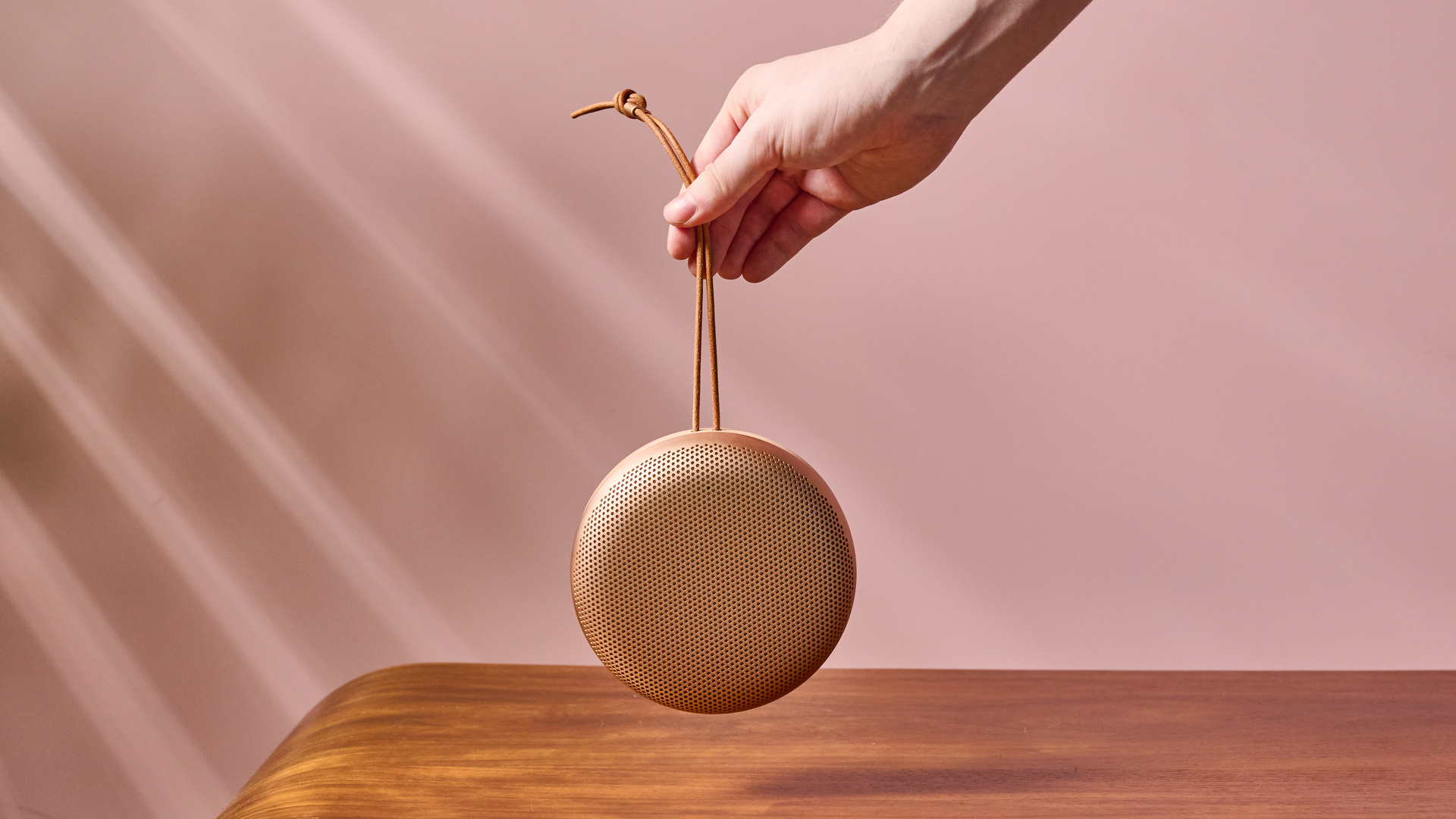
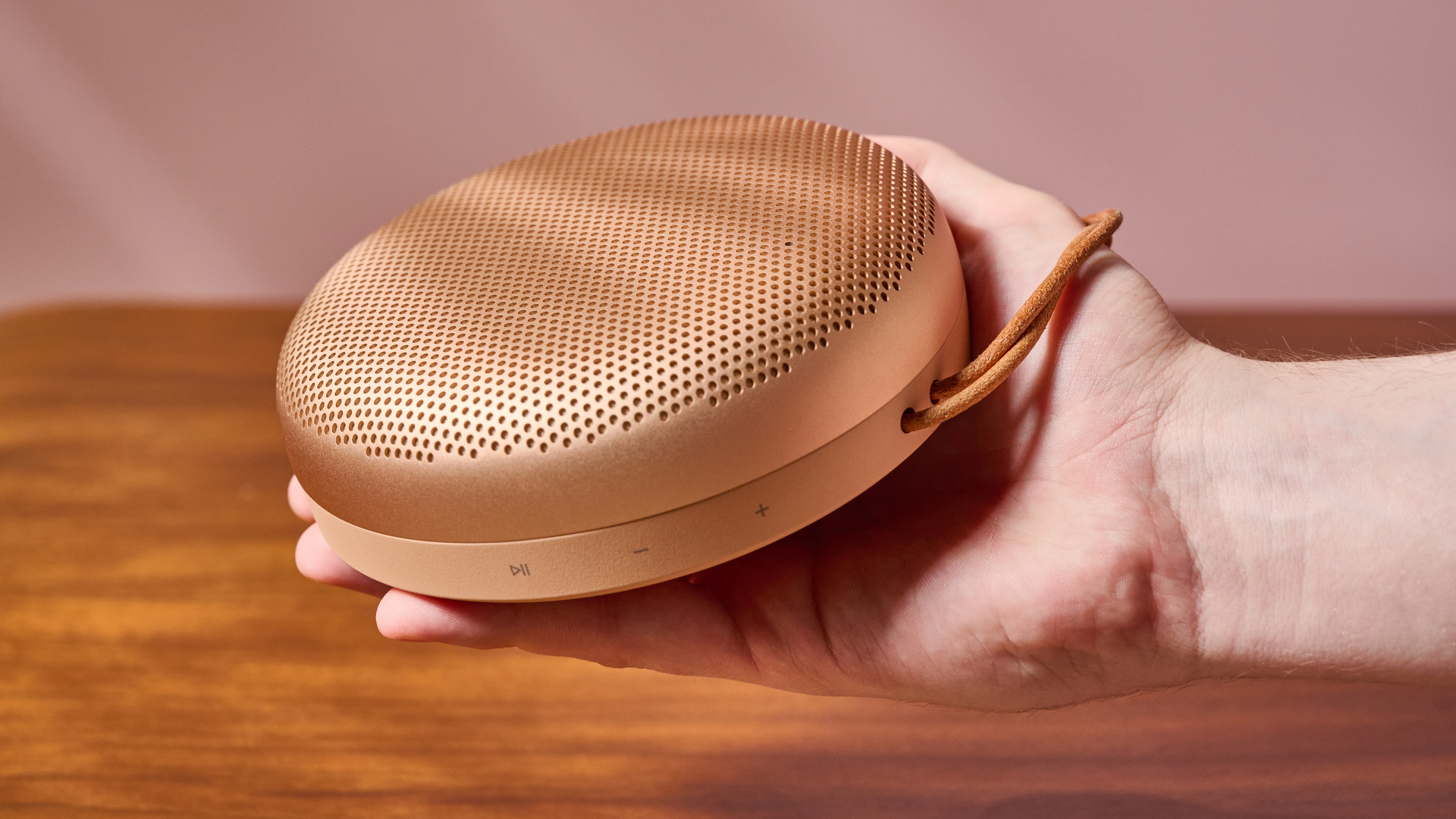
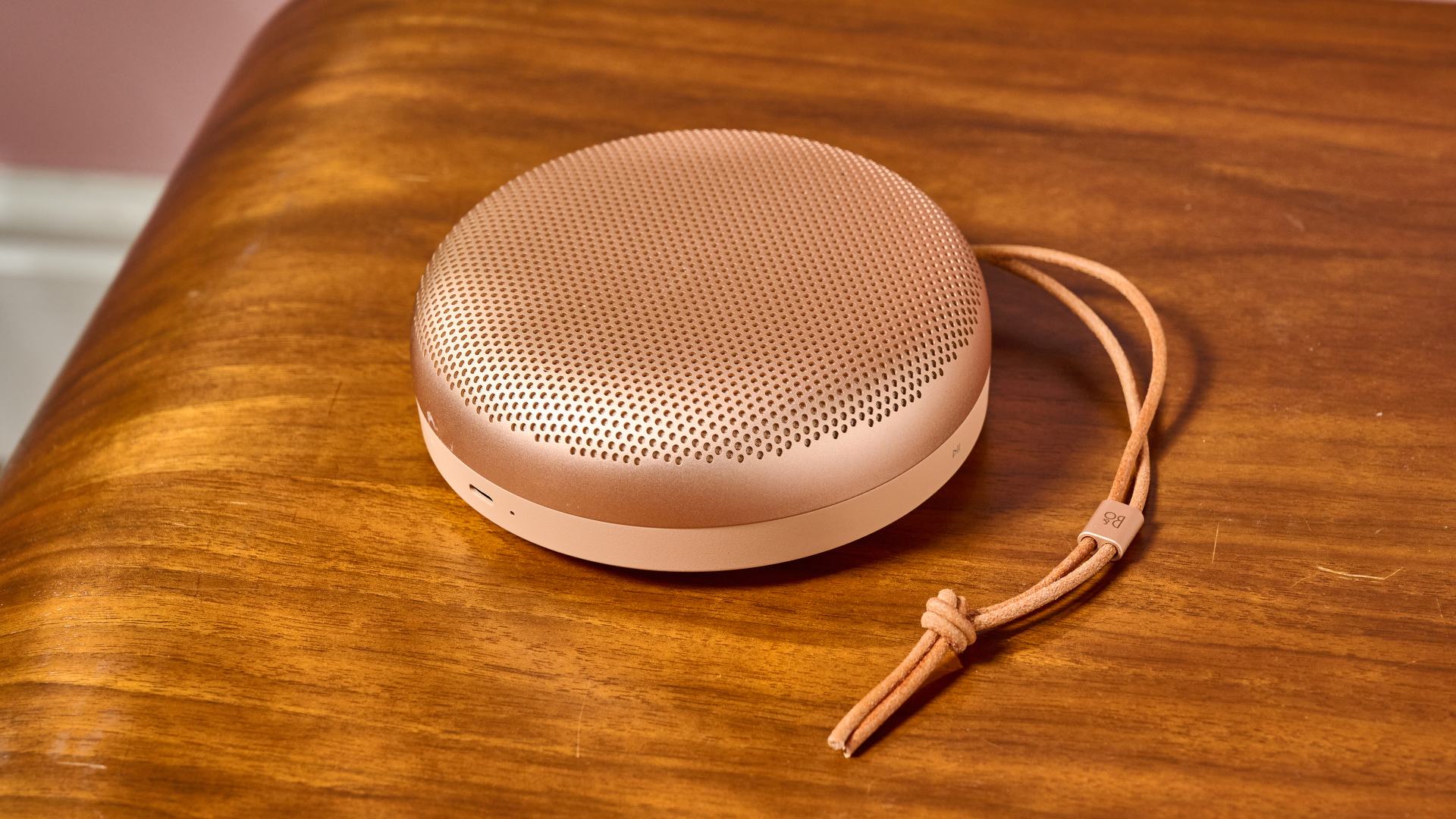
Specifications
Reasons to buy
Reasons to avoid
The low-down
The Bang & Olufsen Beosound A1 3rd Gen was one of the speakers on this list that I tried for the first time just for this guide. And honestly, I hope I never have to give it back. I’ve been playing tunes on it constantly, and enjoying every little detail in my favorite tracks, marveling at its undeniable beauty, and playing around with the fun options in the Bang & Olufsen app.
Seriously, this thing doesn’t suggest that it's premium… it yells it. It perhaps doesn’t offer the same sound-for-pound value as the considerably larger and mightier Bose SoundLink Max, but considering its small size, the A1 3rd Gen is a phenomenal-sounding model. If you’re short on space, the impressively room-filling-yet-revealing sound of this speaker will suit you to a T. You can also show it off to your guests; they’ll almost certainly be wowed by its beauty just as much as its sonic talents.
Scorecard

OK, so Auracast won’t be coming to this speaker, but I still think it has an admirable set of features. There’s stereo pairing, multi-point connectivity, USB-C audio passthrough for elite hi-res sound, and a range of radio stations integrated into the B&O app.

I found that the A1 3rd Gen surpassed my expectations, sonically speaking. Yes, even with that price tag. This thing may be small, but it outputs seriously powerful audio. On top of that, you get an exceptionally detailed listen right across the frequency range, which is even more apparent when making use of the aptX Adaptive codec or, even better, USB-C audio passthrough. The bass extends to surprisingly dark lows, mids are expansive yet controlled, and the attack of sounds in the treble range is snappy and full of intent.

Come on, just look at it! The A1 3rd Gen is a marvel in design, with discreetly placed buttons, eye-catching circular dimensions, and indulgent color variants, such as the Honey Tone I tested. Of course, it’s IP67 waterproof rated too, meaning it's well protected against the elements. The highlight for me, though, is its high-caliber build. The lower half of the speaker is constructed from hard-wearing polymer, while the upper segment is made of textured pearl-blasted anodized aluminum. A leather carry strap just hammers home the true sense of luxury you access by purchasing this absolute gem.

There’s been no sign of a significant sale on this one just yet, and its premium market position means that it will almost always cost you an arm and a leg. But your investment in the A1 3rd Gen will come with significant returns. Unbeatable sound in this size-class, an awe-inspiring design, and a top-tier companion app make this a grand choice indeed. If you did want more power at this price-point, options like the JBL Xtreme 4 or the on-sale Bose SoundLink Max may suit you better.
Best party speaker
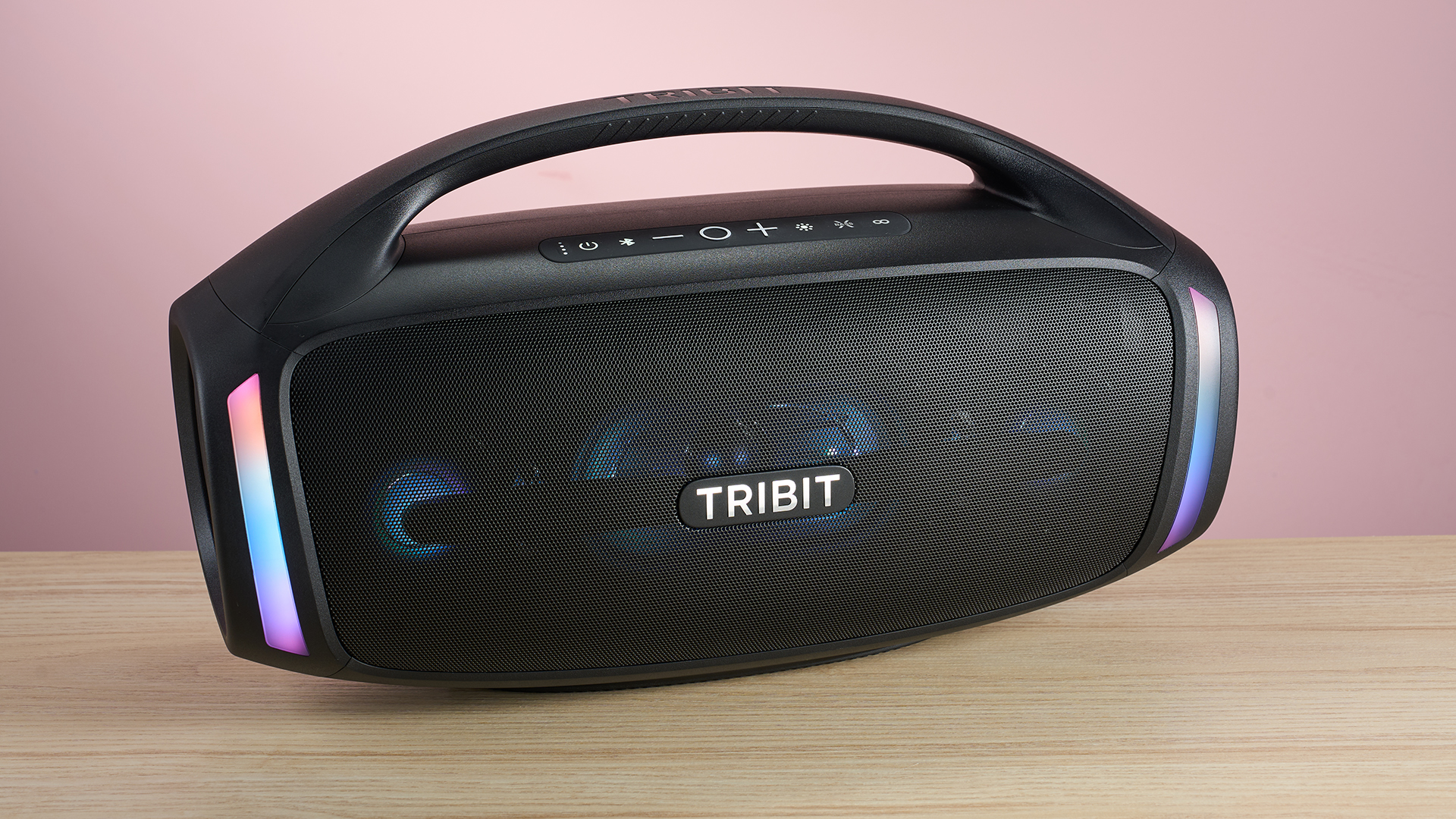
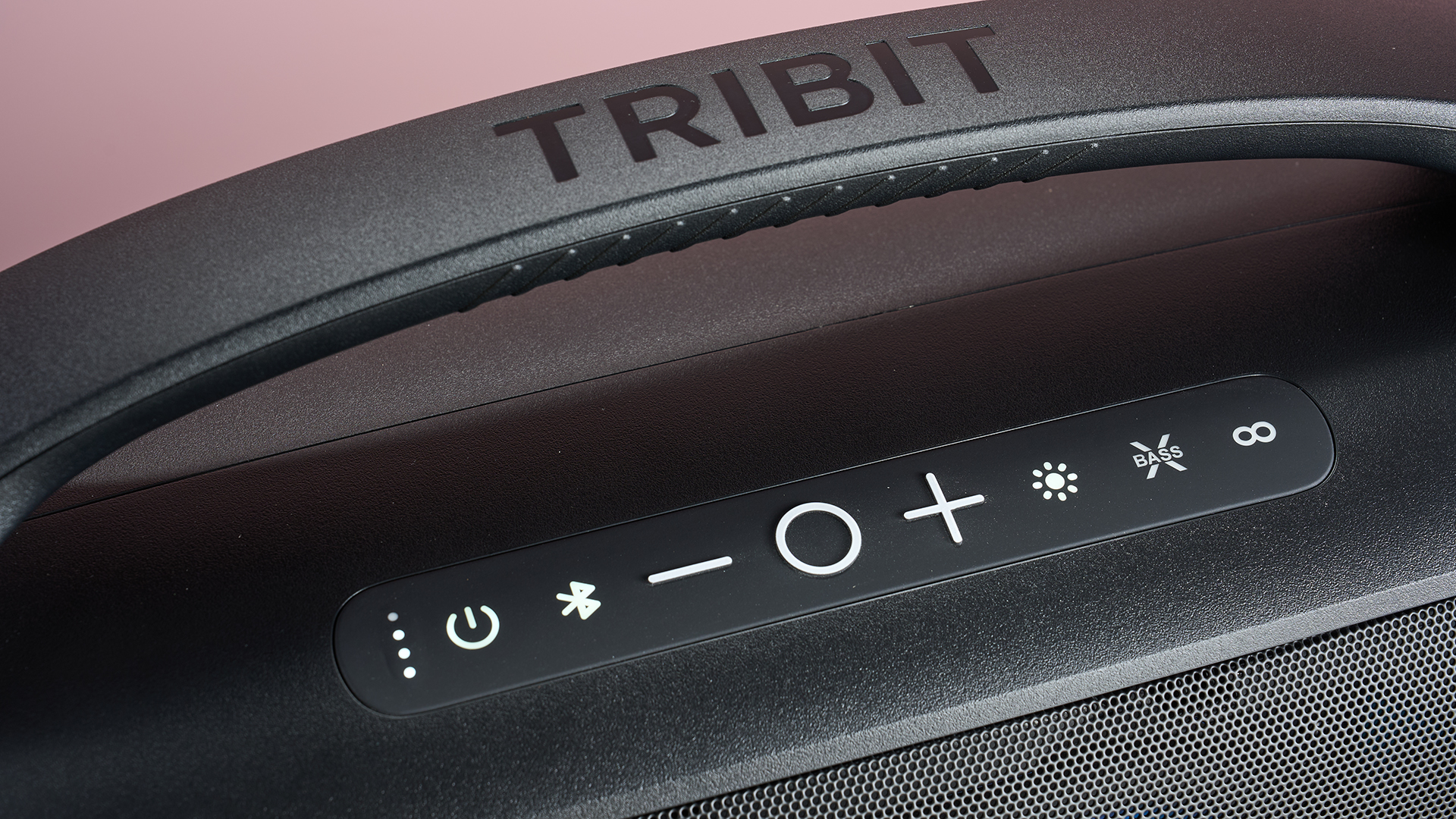
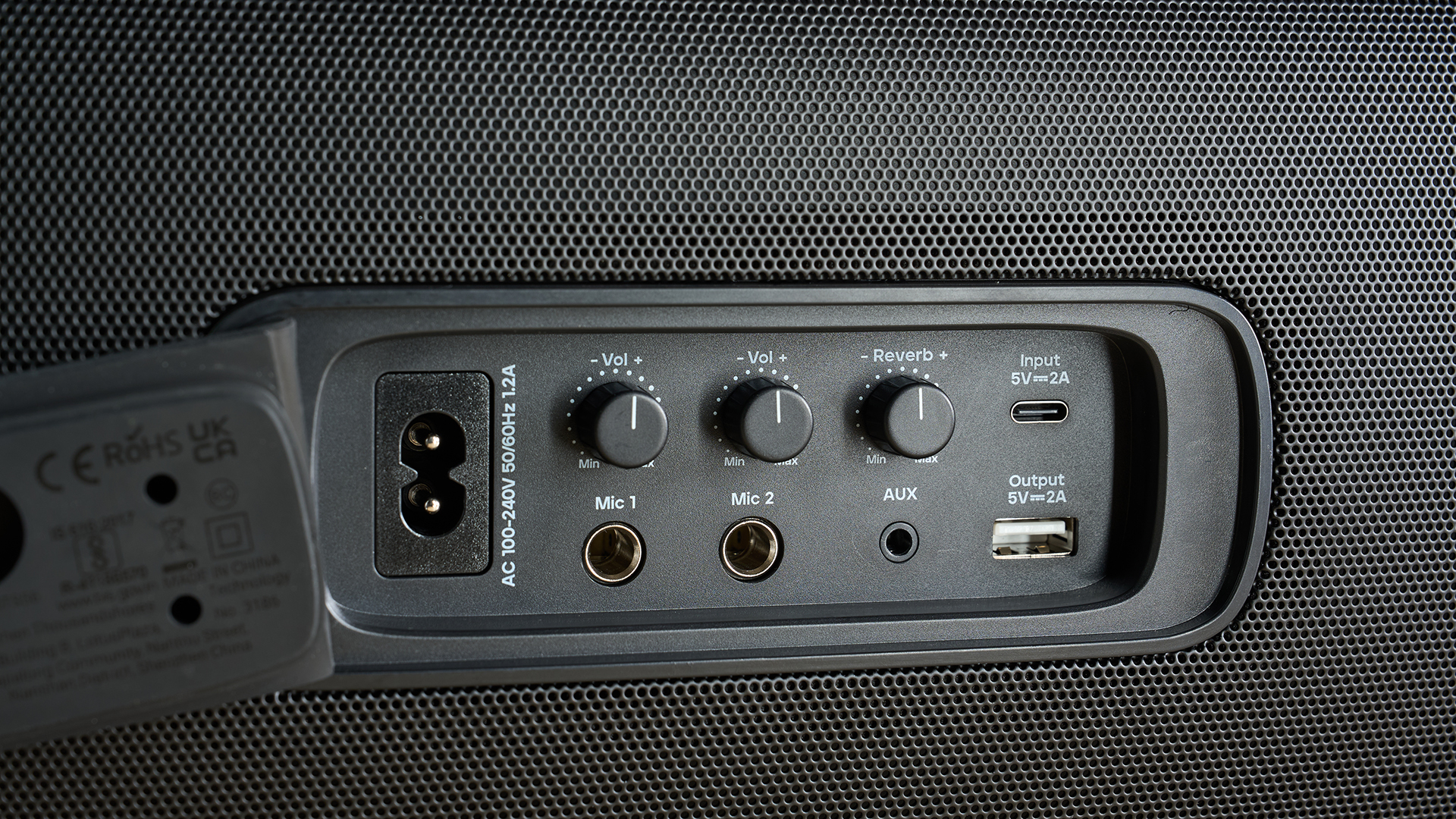
Specifications
Reasons to buy
Reasons to avoid
The low-down
The Tribit Stormbox Blast dishes out earth-shaking bass and supplies up to 200W of power output. That means you’re getting the commanding sound required for busy house parties or outdoor events. But the Stormbox Blast 2 isn’t just loud – it genuinely sounds great. With a rhythmic, cohesive sound, you’ll want to blast tunes for hours on end.
On top of that, the Stormbox Blast 2 supports wireless pairing for microphones, and has 6.35mm ports for wired alternatives, making it a fantastic choice for karaoke fans. Couple that with a 30-hour battery life and customizable LED lighting, and it’s a smash hit.
Scorecard

You can access karaoke with wireless or wired microphone connectivity, exciting lighting options, and an extensive set of EQ options with the Stormbox Blast 2. You also get 30 hours of playtime, an XBass feature for exaggerated low-end output, and USB-C out charging for external devices.

You won’t get the most detailed listen in the world out of the Stormbox Blast 2, but it’s still capable of surprisingly well-rounded sound with a bit of tinkering. And the main event, of course, is the bass. If you want room-swallowing low-end power, the Stormbox Blast 2 is among the best options on the market. Fidelity will take a hit if you edge towards the absolute peak of the volume scale, but you'll likely not need to quite go that loud – and if a party is steering that way, maybe you won't care anyway, as long as the bassline is bouncing.

Although this model is a chunky fella, and heavy to carry around, its curved design means it's still pretty attractive, and its personalizable lights keep it interesting despite a plain black look. IP67 dust and waterproofing means that the speaker can be submerged underwater, making it a good choice for pool parties or beachside listening.

For its size, the Stormbox Blast 2 has more of a mid-range price-tag, which is impressive considering its broad feature-set and commendable audio performance. You can get older and similar party speakers for less, but a range of sound upgrades make this very worthwhile.
Best for battery life


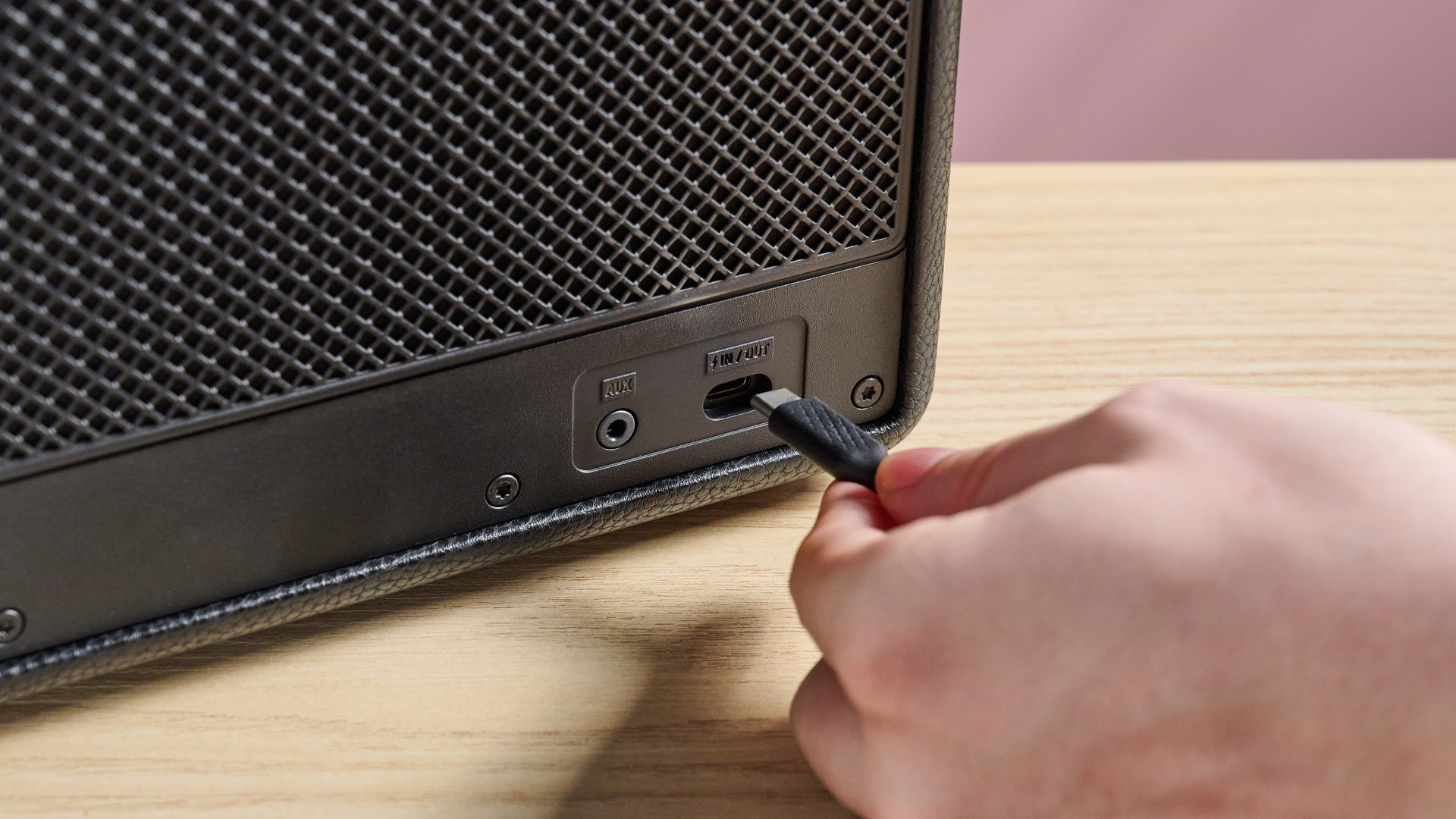
Specifications
Reasons to buy
Reasons to avoid
The low-down
It’s actually unbelievable how long the Marshall Kilburn III can go for without needing a charge – 50 hours to be exact. For a model in its weight class, that’s an outrageous amount of playtime. This model can also be used to charge external devices like mobile phones and headphones, so you can share the power around with ease.
But this thing’s not only a leader in the battery life department – it’s also a top performer when it comes to audio. You’ll uncover phenomenally balanced, detailed, and impactful audio on the Kilburn III, and the Marshall app enables EQ tuning, so you can find your perfect sound.
Scorecard

The Kilburn III has just about everything you’d want from a modern Bluetooth speaker. The Marshall companion app opens up EQ adjustment, Auracast functionality, and battery preservation options. It also has placement compensation, which optimizes audio for your listening space. Of course, you’re also getting 50 hours of playtime, which is truly exemplary.

Even though it skips on higher-resolution Bluetooth audio codecs, this model is one of the best performers, sonically speaking, in its size class. You get seriously weighty, yet responsive bass output, fantastically defined mids, and expressive treble. True 360 stereophonic sound keeps your music sounding unreal from all angles, while deft instrument separation ensures a layered, nuanced listen.

I adore the amp-inspired look of the Kilburn III, which is impeccably crafted with metallic physical controls, hardy faux-leather, and a red velvet-infused carry strap. Its IP54 waterproofing doesn’t stack up too well against some rivals, but it's still splashproof and decently protected against dust.

The Marshall Kilburn III is pricier than its predecessor, but it really does feel worth its cost. With improved acoustics, a significantly upgraded look, and better waterproofing, it more than earns its higher price tag. Even against rivals, I’d consider it fairly priced; it's cheaper than the Bose SoundLink Max, for instance.
Best with Wi-Fi too
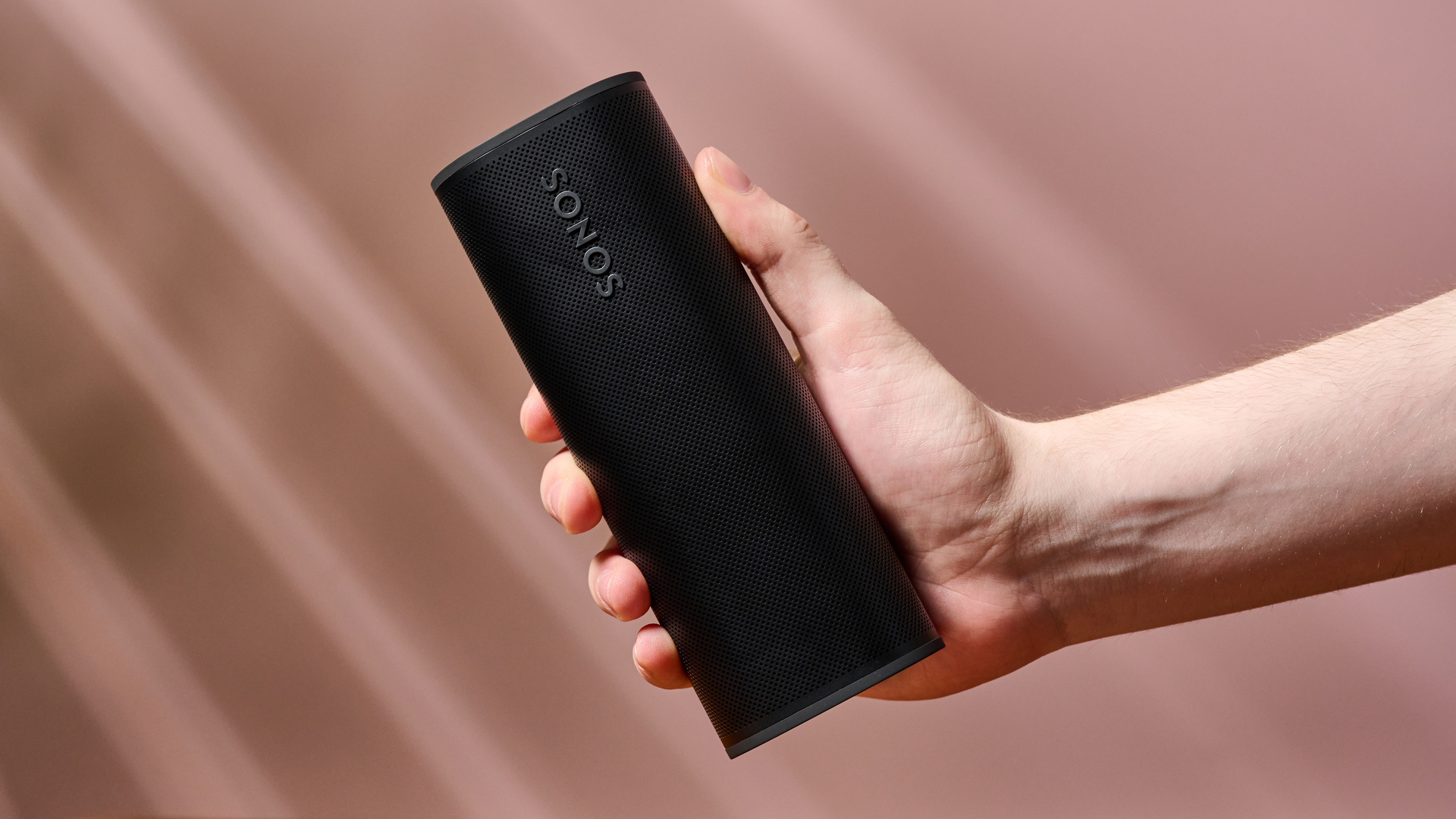
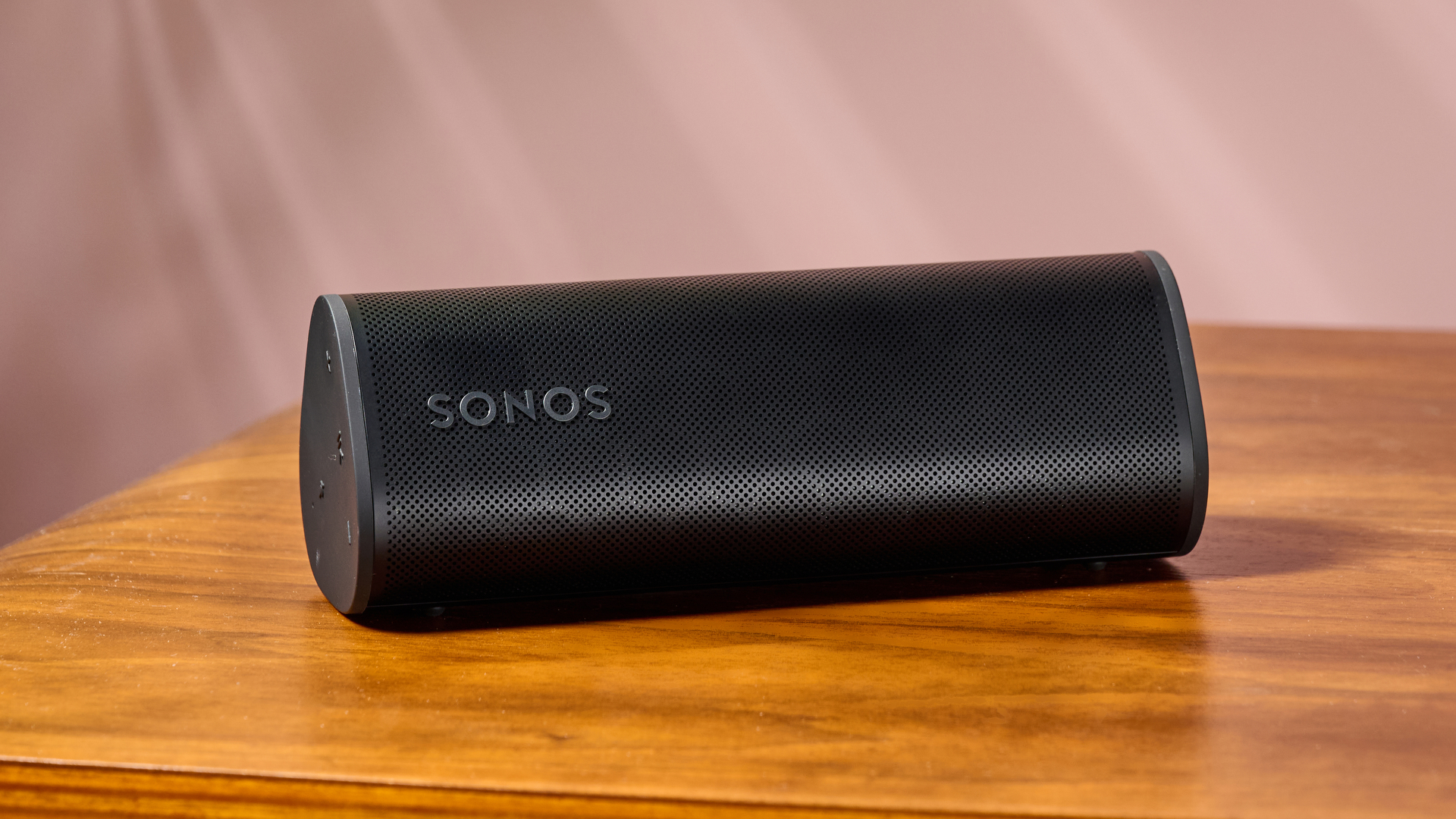

Specifications
Reasons to buy
Reasons to avoid
The low-down
If I was to pick a portable speaker capable of playing music over Wi-Fi as well as Bluetooth, I’d have to go for the Sonos Roam 2. Playing tunes over Wi-Fi will generally mean that less quality is lost than would typically disappear when streaming over Bluetooth, and the Roam 2 takes advantage of that to deliver detailed, engaging listening experiences.
Of course, you get the benefits of Sonos' multi-room technology too. So, if I had a Sonos Move 2 and a Sonos Era 100, say, I'd be able to link this lil’ fella up to my home system. It's not perfect – battery life is a little underwhelming above all. But if you want the ease and quality of Wi-Fi streaming, then this is still my top overall pick.
Scorecard

My favorite feature on the Roam 2 is, of course, its Wi-Fi streaming capability, which helps you enjoy your music in even better quality. It can also link to other speakers in your Sonos ecosystem – if you have any. I also appreciated Trueplay, which optimizes playback to your environment, though I was left wanting more in the battery life department.

More than anything, I was struck by the Roam 2’s high attention to detail in the mid-range, which makes it a fantastic speaker for vocal or guitar-led tracks. It also supplies a decent amount of low-end weight, but I never felt as if bass was overemphasized or muddied. It can’t get that loud, and you’ll experience compression at higher volumes, but that’s very common for speakers in this size category.

With a minimalist design, some unique color options, and a stand-out shape, the Sonos Roam 2 does a good amount to set itself apart from the competition. It also has an IP67 dust and waterproof rating, easy-to-use button controls, and the option to be mounted upright or on its side. Yep, it’s more than just a pretty face!

If you gave me $150 right now and told me to get the best speaker I could, I still think I’d be tempted to grab the JBL Flip 7 over the Sonos Roam 2 for its slightly better sonic performance and power – oh, and its considerably longer battery life. Still, the Roam 2 doesn’t have to rely on Bluetooth, and it still looks great while sounding pretty swell too.
Best giant party speaker
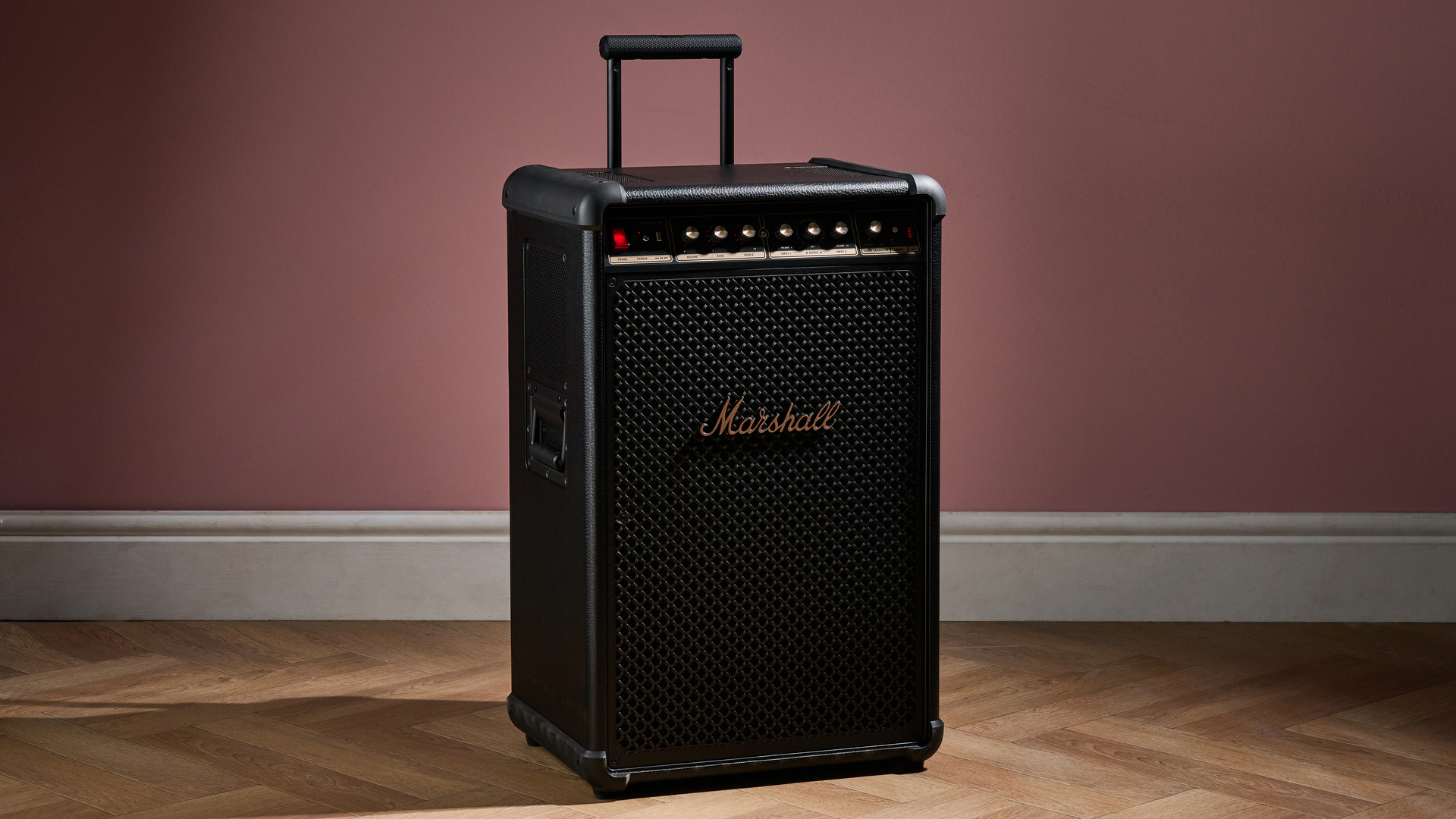
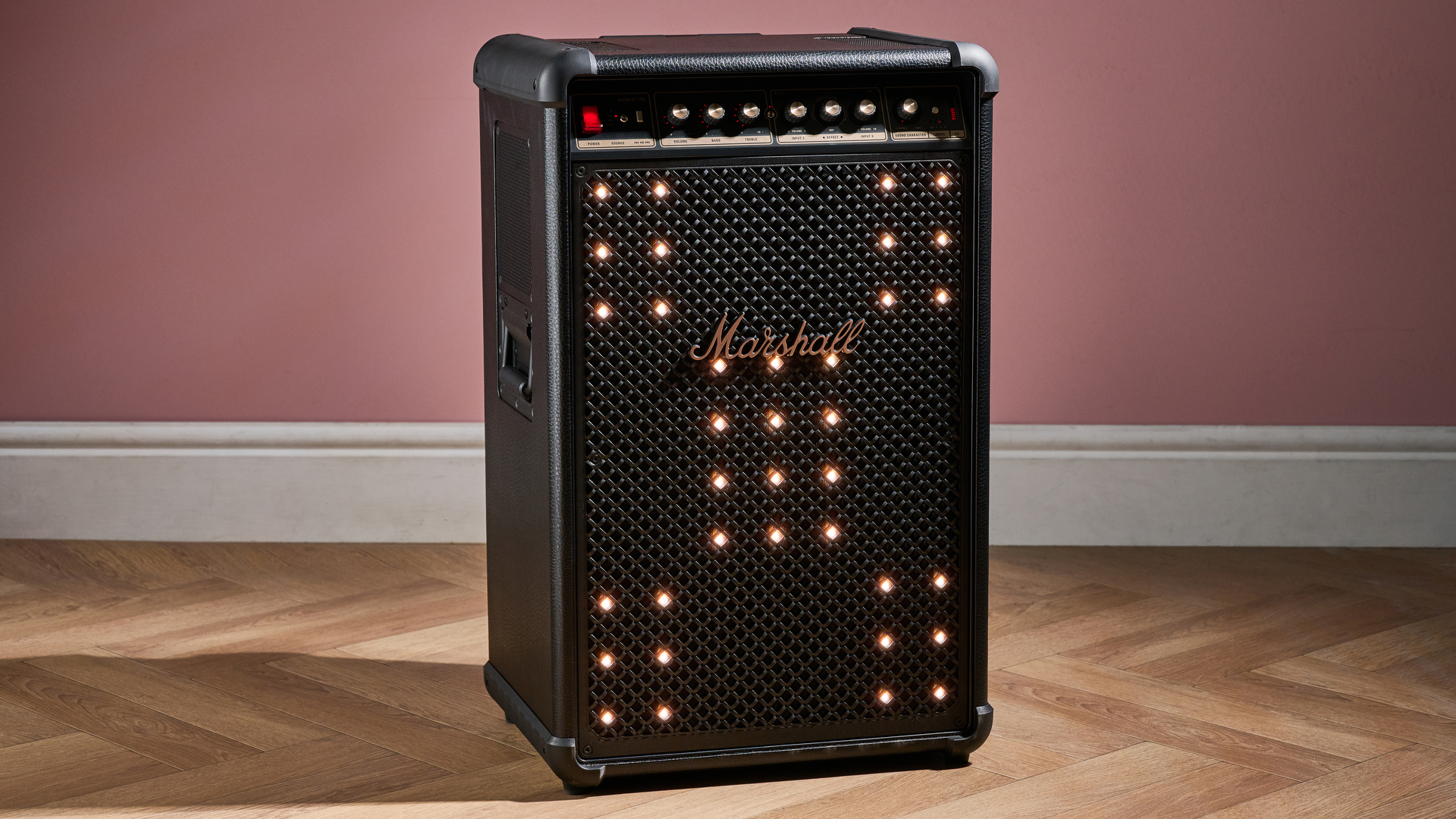

Specifications
Reasons to buy
Reasons to avoid
The low-down
Can debuts get much better than that of the Marshall Bromley 750? I'm really not too sure! Marshall’s first ever gigantic party speaker is fantastic-sounding, gorgeous-looking, and long-lasting beast, and I'd recommend it for any larger-scale event – remember, this thing is large enough that requires wheels and a handle, like a suitcase.
I found that this model could dish out almighty, yet regimented bass, while still giving mid-range sounds like guitars and vocals plenty of room to play. Treble also comes through with clarity and precision, while Marshall’s 360-degree true stereophonic sound tech keeps audio well-defined from all angles. The gorgeous lights and amp-inspired design also help the Bromley to feel worth its fairly hefty price tag, and though its companion app could use some work, the speaker’s physical controls and connectivity options won me over.
Scorecard

With EQ adjustment, customizable lighting, and a whopping 40 hours of battery life, the Bromley 750 is a master in the features department. There are a range of connectivity options too, like RCA ports for keyboards and turntables and XLR/6.35mm combo ports for microphones and electro-acoustic guitars – perfect for karaoke. The Marshall app is a little underequipped, however, meaning you’ll often have to rely on physical controls.

If you need powerful, disciplined audio output, the Bromley 750 is my top choice, as it offers meaty, yet controlled bass response, defined mids, and expressive treble. Sound character control also means you can stick with a more dynamic listen, or sacrifice a bit of fidelity for maximum loudness – you can also live somewhere in between. This works very well, and believe me, if you want to turn it up to 11 here, you can!

I love the way the Bromley 750 looks. Attractive lights shimmer behind its beautiful speaker grille, it has a sleek faux leather exterior, and luxurious physical controls. IP54 waterproofing is up-to-scratch for a speaker of this type, and the built-in handles make the speaker feel pleasingly portable considering its weighty build.

When I reviewed the Marshall Bromley 750, I found myself comparing it to the recently released JBL PartyBox. See, that model's priced very similarly to Marshall’s party debut, but it's got a significantly higher power output. If you want raw might, that one may well offer you better bang for your buck. Still, the ultra-premium build of the Bromley 750, paired with its great sound and repairability, give it great long-term value.
Best Bluetooth speakers comparison chart
Bluetooth speaker | Features score | Sound quality score | Design score | Value score | Battery life |
|---|---|---|---|---|---|
JBL Go 4 | 4/5 | 4/5 | 4.5/5 | 4/5 | 7 hours |
Edifier ES20 | 4.5/5 | 4/5 | 5/5 | 4.5/5 | 15 hours |
JBL Flip 7 | 4.5/5 | 5/5 | 5/5 | 5/5 | 16 hours |
Bose SoundLink Max | 4/5 | 5/5 | 5/5 | 4.5/5 | 20 hours |
Bang & Olufsen Beosound A1 3rd Gen | 4.5/5 | 5/5 | 5/5 | 4.5/5 | 24 hours |
Tribit Stormbox Blast 2 | 4.5/5 | 4.5/5 | 4/5 | 4/5 | 30 hours |
Marshall Kilburn III | 4.5/5 | 5/5 | 4.5/5 | 4.5/5 | 50 hours |
Sonos Roam 2 | 4/5 | 4.5/5 | 4.5/5 | 3.5/5 | 10 hours |
Marshall Bromley 750 | 4.5/5 | 4.5/5 | 5/5 | 4/5 | 40 hours |
More speakers I tested for this guide (A-Z)
Speaker | Why it missed out | Score |
|---|---|---|
It delivers solid bass at a cheap price, but its sound quality can't compare to similarly priced rivals. | 3.5/5 | |
Similar story to the above, though it does look and sound a little more refined than its smaller sibling. | 4/5 | |
The battery life here really impressed us during testing – you get a whole 25 hours. But it's just not good enough sonically and lacked bass. | 3/5 | |
A great waterproof speaker, but doesn't sound as good or last as long as the Flip 7. | 4/5 | |
Bass seemed a little distant to me, and lacked the weight I'd expect. | 4.5/5 | |
It's a tragedy it doesn't make the cut – I just think the Flip 7 edges it slightly on value for money. | 5/5 | |
It's a brilliant speaker, but the ES20 just beats it, thanks to its superior battery life and mid-range detail. | 4.5/5 | |
Sonically, I expected a little more from the Grip, but it's still a fun lil' speaker. | 4/5 | |
I think the SoundLink Max sounds a little better, and looks a lot more beautiful to boot. | 4/5 | |
JLab Pop Party | This did not sound good at all in my testing, especially compared to the JBL Go 4. | Not yet rated |
Sonically, this thing isn't very impressive, and on that basis, it loses out to the Go 4. | 3.5/5 | |
A neat small-sized JBL Clip 5 rival, but I'm still giving the ES20 the edge over either of them. | 4/5 | |
A mediocre effort from LG with underwhelming battery life and sound quality. | 3/5 | |
I felt that the bass sounded a little bloated compared to the Flip 7 and Charge 6, so it falls short. | 4.5/5 | |
A top-notch party speaker that doesn't quite offer the value-for-money or power output of the Stormbox Blast 2. | 4.5/5 | |
A middling party speaker that doesn't look or sound interesting enough to make the cut. | 3.5/5 | |
An average-at-best sounding Bluetooth speaker, but I do love the design concept. | Not yet rated | |
It lacks the full-bodied sound of rivals in its price range, so doesn't get a spot in my guide. | 3.5/5 | |
I was disappointed by this speaker's sonic capabilities, especially given it's not the cheapest model around. | 3/5 | |
This one just can't hit the deep, dark notes well enough, so it's a no from me. | 3.5/5 | |
I liked the Mini Plus, it just struggles a bit at higher volumes and the Go 4 feels a little more stylish. | 3.5/5 | |
As much as I love the look and name of the Miniroll, its feature-set isn't fleshed out enough to make the cut. | 3.5/5 | |
An absolutely excellent small speaker that ran so close to the ES20, but while its bass is more impactful, I felt it lacked the nuance and detail that some competitors offer. | 4.5/5 |
How I tested Bluetooth speakers for this guide
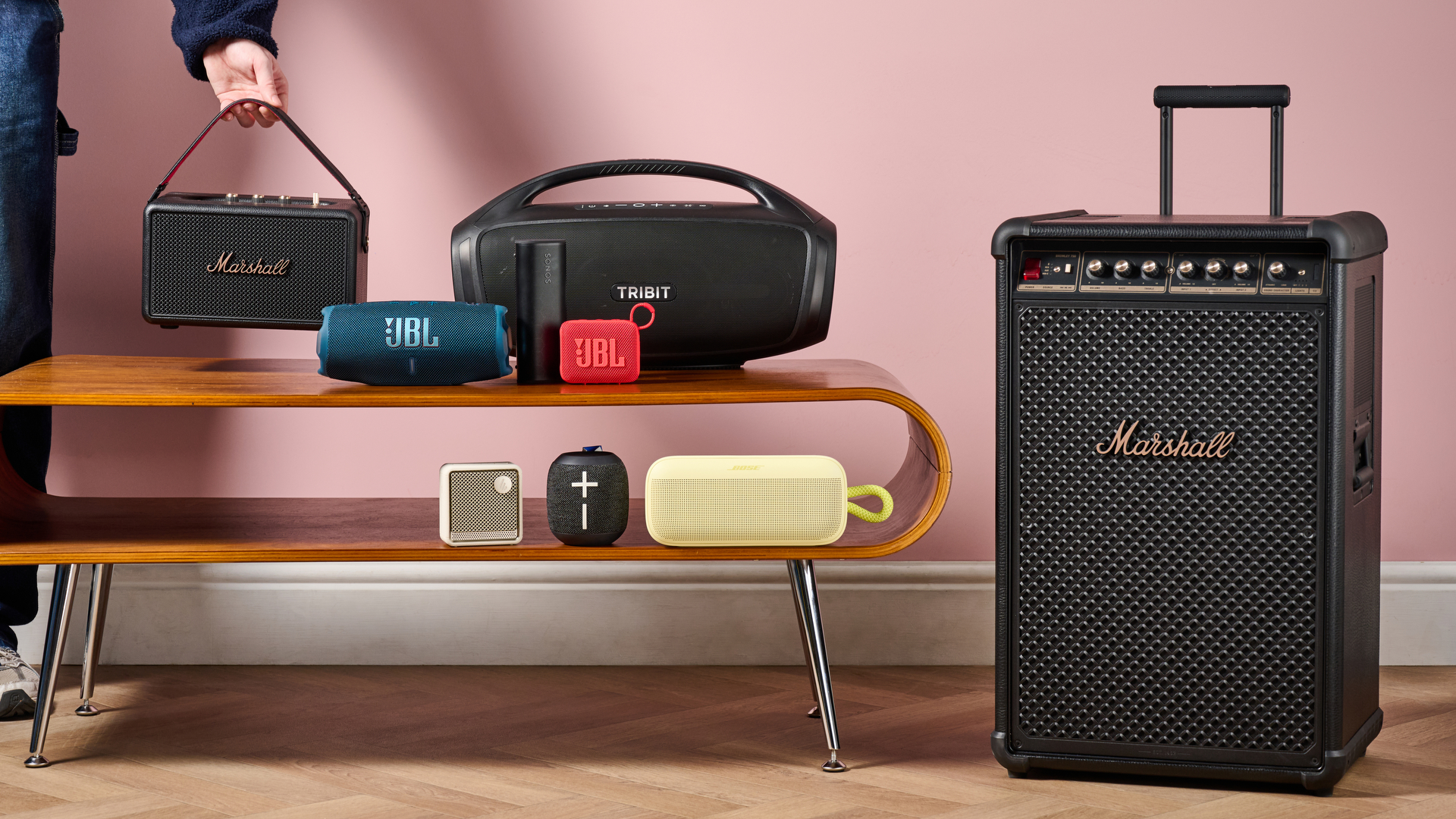
I have personally tested every single Bluetooth speaker listed in this guide, including a number that didn't quite make the cut – those are listed above. In order to build this guide, I spent multiple weeks testing a whole lot of models, comparing a load of rivals on aspects like sound quality, features, and design. On top of this, I've been consistently reviewing Bluetooth speakers and other related audio gear for more than a year and a half here at TechRadar.
Anyway, what does the actual testing process look (and sound) like? Well, first of all, I make sure I'm using Tidal to listen to music, thanks to its support for quality up to 24-bit and 192kHz, so I'm started with the best possible source. In addition, I make sure to run through the TechRadar testing playlist, which features tracks from a number of genres, like Classical, Electronic, Jazz, and Rock.
Of course, I want to have a bit of fun while doing this, so I always bump a few tracks from my personal music library too. I listen to a lot of house music and jazz funk fusion, but my playlists feature a range of tunes that help me to judge dynamics, tonal accuracy, and detail right across the frequency range.
I always test out audio gear in the music testing space we have here on TechRadar – a quiet, acoustically treated and controlled environment for judging the quality of audio gear. However, I do try to take speakers into other environments too, including my home, the office, outdoor spaces, and sometimes even the shower (if that IP rating is high enough, of course).
On top of this, I'll make sure to test performance across different connectivity methods. Sometimes a speaker won't showcase its full potential unless its making use of a wired connection. Maybe it needs to be plugged into a power source to hit its maximum power output. I'll try whatever is necessary to hear the full potential of each unit I try. This includes making use of higher resolution codecs, like aptX Adaptive, which require a compatible source device or USB-C dongle.
If a Bluetooth speaker has a companion app, I'll also ensure that it's downloaded (I have so many my phone is running out of storage). Then, I'll exhaust every option, from EQ adjustment through to customizable lighting or battery preservation modes.
Keen to learn more about how we review audio gear and more at TechRadar? Make sure you head on over to our 'how we test' guide.
Q&A: my advice for buying
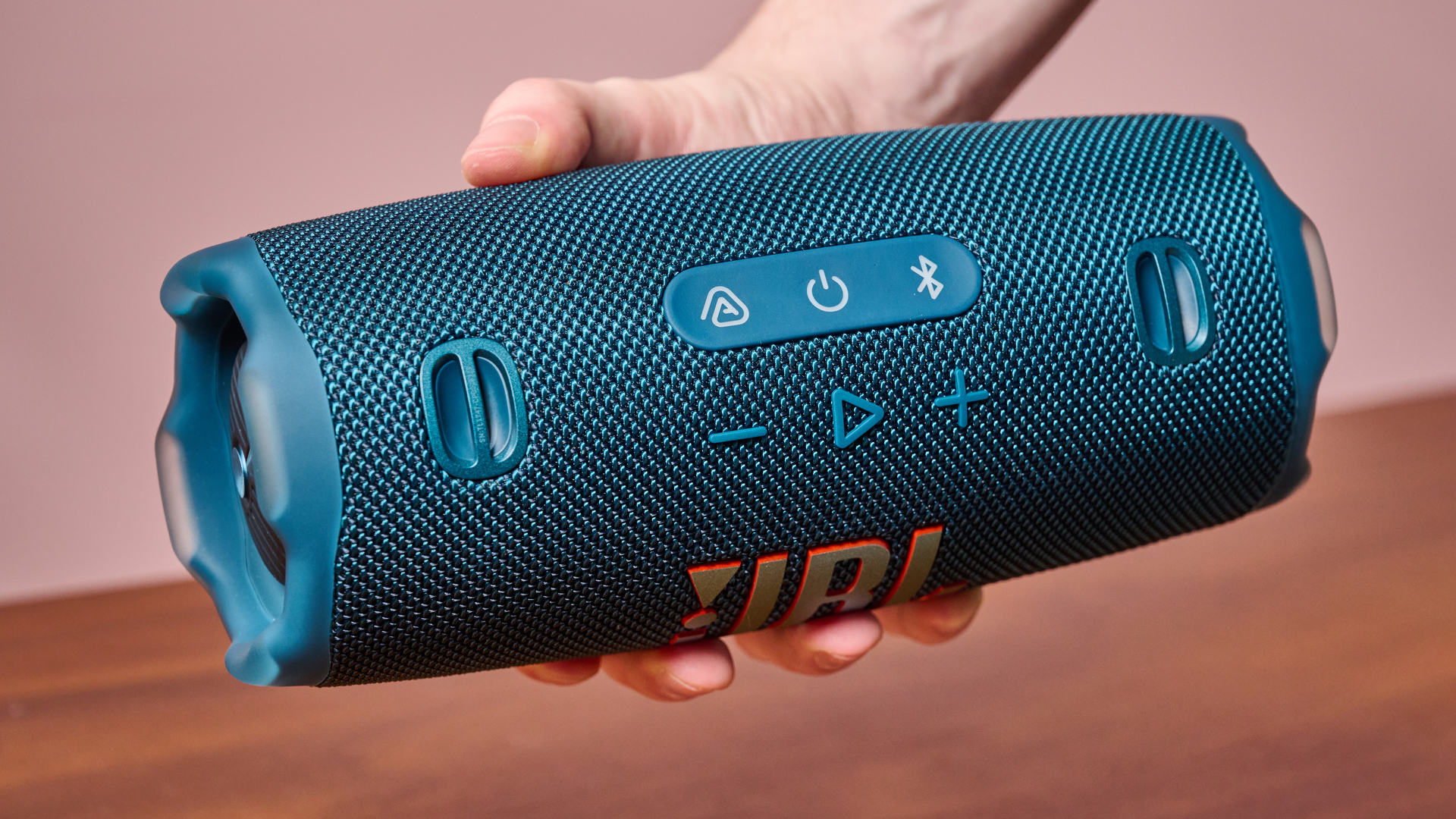
How do I know which Bluetooth speaker to choose?
Let's start with the most important question first. To choose the perfect Bluetooth speaker, you'll have to ask yourself a few questions. What do you want to use it for? Personal listening? Parties? Playing music in the shower? Some speakers might not have the raw power needed for parties, and some may not have the waterproofing required for mid-scrub listening, so consider the amount of power and protection you'll need, for instance.
It's also important to think about size. Do you want a mini speaker for dropping tunes in your bedroom? Do you want a behemoth that can get everybody moving at an outdoor gathering? Consider how much portability and room you need.
And it goes without saying, but set yourself a budget. Good quality audio really doesn't have to cost an arm and a leg. Of course, the sub-$10 speakers on Amazon should probably be avoided, but there are a number of options under $50 that can serve you well.
What is the best waterproof speaker?
There are a lot of great waterproof speakers, but I can run through a few top choices. For a smaller model, I recommend the Edifier ES20 or the Ultimate Ears Wonderboom 4. These are both IP67-rated and each sound great.
For a mid-sized option, the JBL Flip 7 or JBL Charge 6 are exemplary choices. We scored both models five stars, and their IP68 dust and waterproofing is out of this world.
Meanwhile, those seeking out a larger model will be best off with the Bose SoundLink Max or the Tribit Stormbox Blast 2. These both combine IP67 protection against the elements with seriously hefty audio output.
Should I buy a JBL or a Bose Bluetooth speaker?
This comes down to two main things. First, budget; second, personal preference. JBL typically offers more budget-friendly audio gear than Bose, but you can still generally expect a terrific standard of sound and build quality. There's also a trademark look to a JBL speaker. It's rugged, outdoorsy, and often cylindrical. Maybe you dig that, maybe you don't!
Bose, for many, is synonymous with luxury. And that makes a lot of sense, especially given that the Bose SoundLink Max made the cut as my top premium pick. You often get impressive levels of sonic detail and a spectacular finish from Bose speakers. I'd argue that some models don't offer the spectacular value that JBL do, but if you've got the cash and want to hear some finer details, it may well be worth the additional spend.
Which is better: Bluetooth or wireless (Wi-Fi) speakers?
A lot of the time, wireless speakers – those capable of streaming over Wi-Fi – are better equipped for home listening, often featuring a less rugged or portable design. But that comes with the benefit of playing music over Wi-Fi, which often sounds better than Bluetooth streaming.
That's because more data is typically lost during a Bluetooth stream, though some higher-quality codecs can retain a tad more detail. But the best Bluetooth speakers still sound great, and they can often offer superior portability and waterproofing among other things.
Some speakers can do both – see the Sonos Roam 2. If you're going to be using a speaker almost exclusively at home, indoors, then I'd recommending taking a peek at our best wireless speakers guide. Otherwise, one of the options on this list will certainly suit your needs.

What is frequency response?
In this context, frequency response refers to the range of frequencies that a speaker can reproduce. For example, if a speaker's frequency response is 20Hz-20kHz, that suggests that it is capable of replicating all sounds within the average human's range of hearing.
What are codecs?
Audio codecs compress and encode audio signals, which are transmitted wirelessly from one device to another. These are then decoded by another device, and delivered to you, the listener.
Allow me to provide an example. Say you're playing music via Spotify on the Edifier ES20 speaker, which is connected to your Android phone. The audio file – playing from Spotify – would then be compressed and re-encoded by your phone with the SBC codec, before being decoded by the Edifier speaker and played to you.
SBC is the most basic codec, and the vast majority of Bluetooth devices support it. AAC offers better sound quality than SBC, and can potentially transmit audio without compressing or re-encoding it, if the source music file is AAC, if both the speaker and your source device support AAC transmission, and if the file isn't too high-quality for Bluetooth's bandwidth.
There are some more fancy codecs to uncover that audiophiles will likely appreciate.
For instance, LDAC – Sony's proprietary coding tech – and aptX codecs, like aptX Adaptive, can open you up to higher-resolution Bluetooth audio. A lot of modern Android devices support LDAC, but not as many phones and tablets support aptX Adaptive.
Crucially, you'll need to make sure your source device and Bluetooth speaker both support the codec you want to make use of. For instance, the Xiaomi 17 Pro Max and the Bose SoundLink Plus each support aptX Adaptive. Make sure the streaming service you use also enables higher-resolution streaming. Tidal, for instance, can open up streaming in 24-bit, 192 kHz, so you'll be able to hear those additional details that aptX Adaptive can uncover.
A Bluetooth speaker doesn't necessarily need to support LDAC or aptX to sound good – the JBL and Marshall speakers on this list, for example, offer impressive sound without them. But it can be a nice touch for those listeners who want a more intricate, revealing listen.
What are IP ratings?
OK, this one's a little less tech intensive! IP ratings refer to the dust and water protection a product has. After the letters IP, you'll find two additional characters. The first indicates its dustproof rating, while the second shows its waterproof rating.
For example, if a Bluetooth speaker is IP67-rated, then that tells us two specific things. Firstly, the '6' shows that the model is dust-tight, and completely protected against dust ingress. Meanwhile, the '7' means that the speaker is waterproof, and can safely be submerged under a meter of freshwater for up to 30 minutes.
When you buy a new Bluetooth speaker, you should always check its IP rating. If it's IPX7 rated, for example, that means it does not have a dust resistance guarantee, but is safe to be submerged underwater. If it is IP54 rated, say, that means that it's partially dust-proof, but only splashproof, rather than fully waterproof.
Does it matter which Bluetooth version a speaker is?
If you're buying a more recently released Bluetooth speaker, like the ones in my guide, then my honest answer to this question is: not much.
All modern phones can connect to the speakers in this guide, though its worth noting that only speakers with the Bluetooth 5.2 version or later support the LC3 codec, which is used for Auracast streams.
Can I pair multiple Bluetooth speakers together?
A lot of the time, yes. However, speakers can only generally be paired with specific models – often, multiple units of the same model. One brand that has a slightly more expansive approach is JBL, which lets you connect a wide variety of its speakers together, so long as they support Auracast. You may need two of the exact same model for stereo pairing, though.
The latest updates to this Bluetooth speakers guide
December 1, 2025
Refreshed the introduction. Added the AO Mini Portable Wireless Speaker to our 'more I've tested' section, based on our recent review.
October 16, 2025
Refreshed the introduction. Switched the Edifier ES20 into the no 2 spot as 'best budget', replacing the JBL Clip 5, which is now in our 'also consider' section. Switched the Marshall Bromley 750 into no 5 spot as 'best for parties'. Replaced the older JBL Charge 5 model in the 'best to charge a phone' spot with the newer JBL Charge 6.
September 12, 2025
Updated author details. Added the LG xboom Stage 301 as our 'Best for karaoke' at the number 12 spot. Added a few recently reviewed devices to our also consider section, including the Groov-e Wave Glow and Tribit Stormbox Mini Plus. Updated the 'how we test' section.
August 7, 2025
Switched out the Tribit Stormbox Flow for the Marshall Kilburn III as 'best for battery'. Added the Ultimate Ears Megaboom 4 to the 'More we've tested' section and tidied up this list to remove some older recommendations.
July 2, 2025
Checked all products against our latest reviews. Updated and rewrote the entry for the JBL Clip 5, our 'best budget' pick, to reflect a year of real-world use. Added several new options to our list of other speakers we've recently reviewed. Updated our FAQ section with new entries to help readers better understand the Bluetooth speaker world.
May 22, 2025
Replaced the UE Everboom with the Bang & Olufsen A1 3rd Gen, making it our 'Best small speaker for sound' choice. The UE Everboom moved into our 'Also consider' section, as it's still a very good sound-per-pound option.
May 1, 2025
Replaced the JBL Flip 6 with the newly released JBL Flip 7 after our recent testing. Moved the Flip 6 into our 'also consider' section, as it's still well worth it if you can find it discounted.
Read more updates
April 3, 2025
Rewrote the introduction and added the Tribit Stormbox Lava into our 'also consider' section based on our recent testing.
March 7, 2025
We refreshed the introduction to tighten it up. We added two products to our 'also consider' section, including the Anker Soundcore Boom 2 Plus and Happy Plugs Joy. We also edited the other entries in that section to make them easier to scan.
February 8, 2025
Swapped the order of products based on the latest real-world prices. Swapped the JBL Xtreme 4 for the Tribit Stormbox Blast 2, based on our testing. Added more recently reviewed options to the Also Consider sections.
January 9, 2025
Rewrote the introduction. Added the Bose SoundLink Flex Gen 2, LG XBoom Go XG8T and LG XBoom Go XG2T products to our 'also consider' section, based on our reviews published in the past two weeks.
December 12, 2024
Refreshed the introduction. Added more images to each of our reviews to give readers a better look at our recommendations. Included scorecards under each Bluetooth speaker we've recommended so readers can get a quick sense of what each entry has to offer.
November 15, 2024
Rewrote the introduction. Slotted in a new 'Black Friday' section to share buying advice and news of relevant upcoming deals. Refreshed our 'also consider' section to include the Marshall Emberton III and the Earfun UBoom X. Added a 'Tested by' section to highlight the expert knowledge and experience of our audio review team.
October 23, 2024
Rewrote the introduction. Added the Loewe We Hear Pro vs Kylian Mbappé speaker as our 'best for training' pick and the recently reviewed Ultimate Ears Wonderboom 4 as our 'best for picnics' choice, based on our testing. Refreshed the 'also consider' section and added the Ultimate Ears Miniroll. Condensed our 'how we test' advice to make our review process clearer for readers.
September 26, 2024
Swapped the Ultimate Ears Epicboom for the new LG XBoom XO2T as our 'best for design' choice based on our recent testing. Added a few additional options in our 'also consider' section, including the Morel Biggie.
August 22, 2024
Switched the Sonos Roam for the Sonos Roam 2 as our best Bluetooth speaker overall. also replaced the Tribit Stormbox Micro 2 for the JBL Clip 5 in our 'best budget' category. Finally, swapped the B&O A2 for the UE Everboom, which is now our 'best sound-per-pound' pick.
July 30, 2024
Updated the 'Also consider' section with information about the latest products we've reviewed, and why they didn't make it into this list.
July 1, 2024
Removed the older Tribit Stormbox Blast and added the JBL Xtreme 4 as our recommendation for best party speaker. Added the new Bose SoundLink Max as our pick for the best premium buy. Removed the quick menu, updated the copy throughout.
June 5, 2024
Replaced Sonos Move 2 with the JBL Xtreme 4 as our best premium pick, due its more portable nature. Updated our other options to consider based on the latest reviews.
May 8, 2024
Updated the intro, and checked all products against our latest reviews. Updated some product information throughout.
April 4, 2024
Removed the Cleer Audio Scene as best for aux-in and Ultimate Ears Hyperboom as best for powerful sound. Added in a new 'Also consider' section that highlights upcoming new releases to look out for.
March 4, 2024
Added Tribit Stormbox Flow and Ultimate Ears Epicboom to this buying guide. Updated biog and key points. Reworte intro to reflect current tech updates in the category.
January 25, 2024
Updated write-ups for each product to include extra summaries from key points of their respective reviews.
November 30, 2023
Updated copy throughout, added Sonos Move 2 details.
September 25, 2023
Updated lead image, added 'buy it if' boxouts to product write-ups and swapped out the Sonos Move for the Move 2 as the best premium Bluetooth speaker.
Aug 10, 2023
Updated intro, checked prices, considered other competing options for entry to this guide
July 25, 2023
Added links to our recent IKEA shower speaker feature and mini Bluetooth speakers roundup. Updated the intro to reflect current trends and best choices.
June 15, 2023
Updated the format of this guide to make it easier to navigate. Added more about how we test Bluetooth speakers to the introduction. Updated FAQs at the end to reflect our current choices. Removed a discontinued product from the list.
June 6, 2023
Updated introduction to reflect the new season, and checked all products.
May 18, 2023
Changed images to our own hands-on pictures. Reordered products to reflect the latest prices.
April 13, 2023
Checked all products against our latest reviews and ratings.
February 17, 2023
Added Cleer Audio Scene to the list. Reordered products accordingly.
Sign up for breaking news, reviews, opinion, top tech deals, and more.

Harry is a Reviews Staff Writer for TechRadar. He reviews everything from party speakers to wall chargers and has a particular interest in the worlds of audio and gaming. Harry has a background in business tech journalism, particularly around the telecoms industry.
- Becky ScarrottAudio Editor